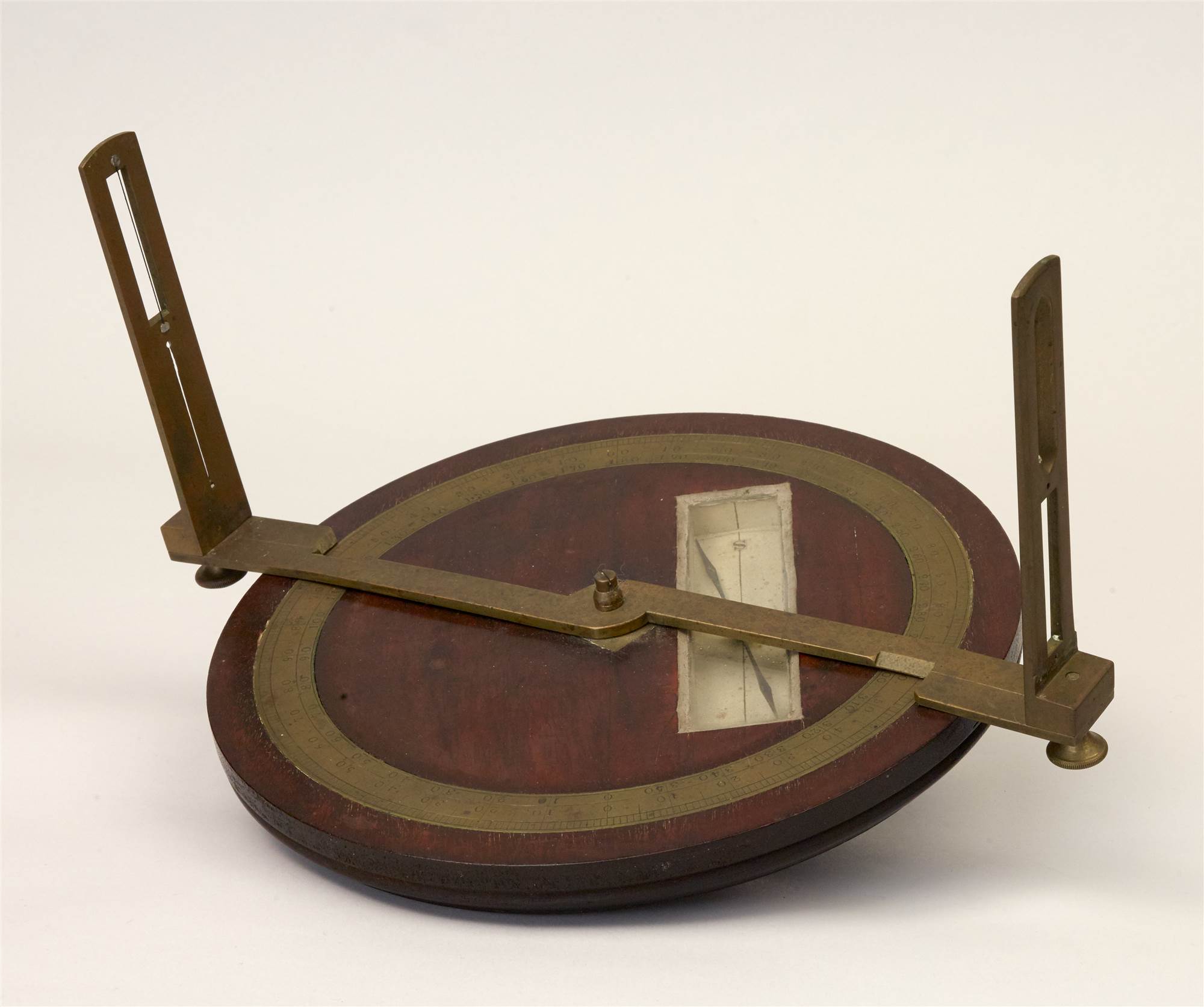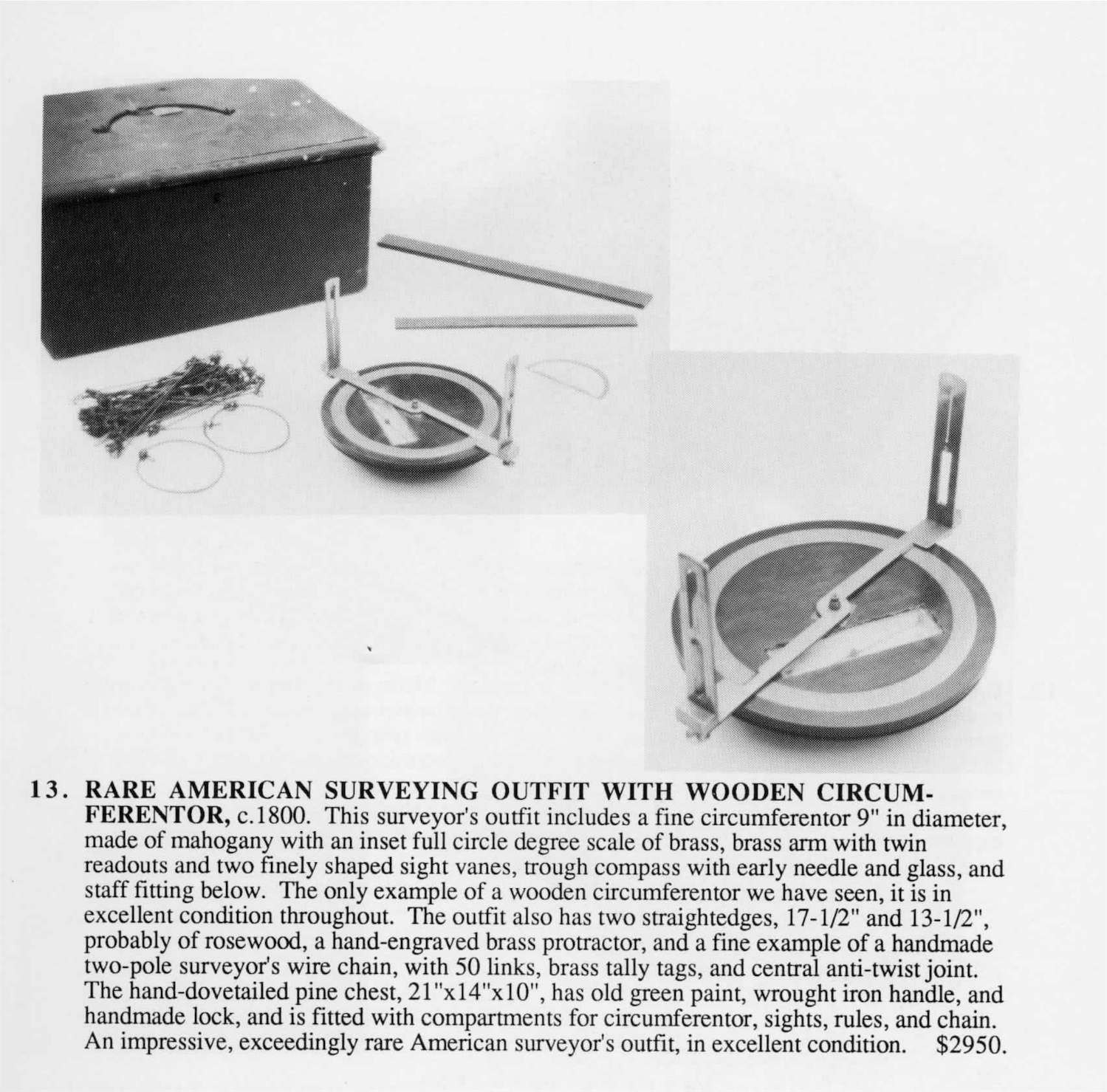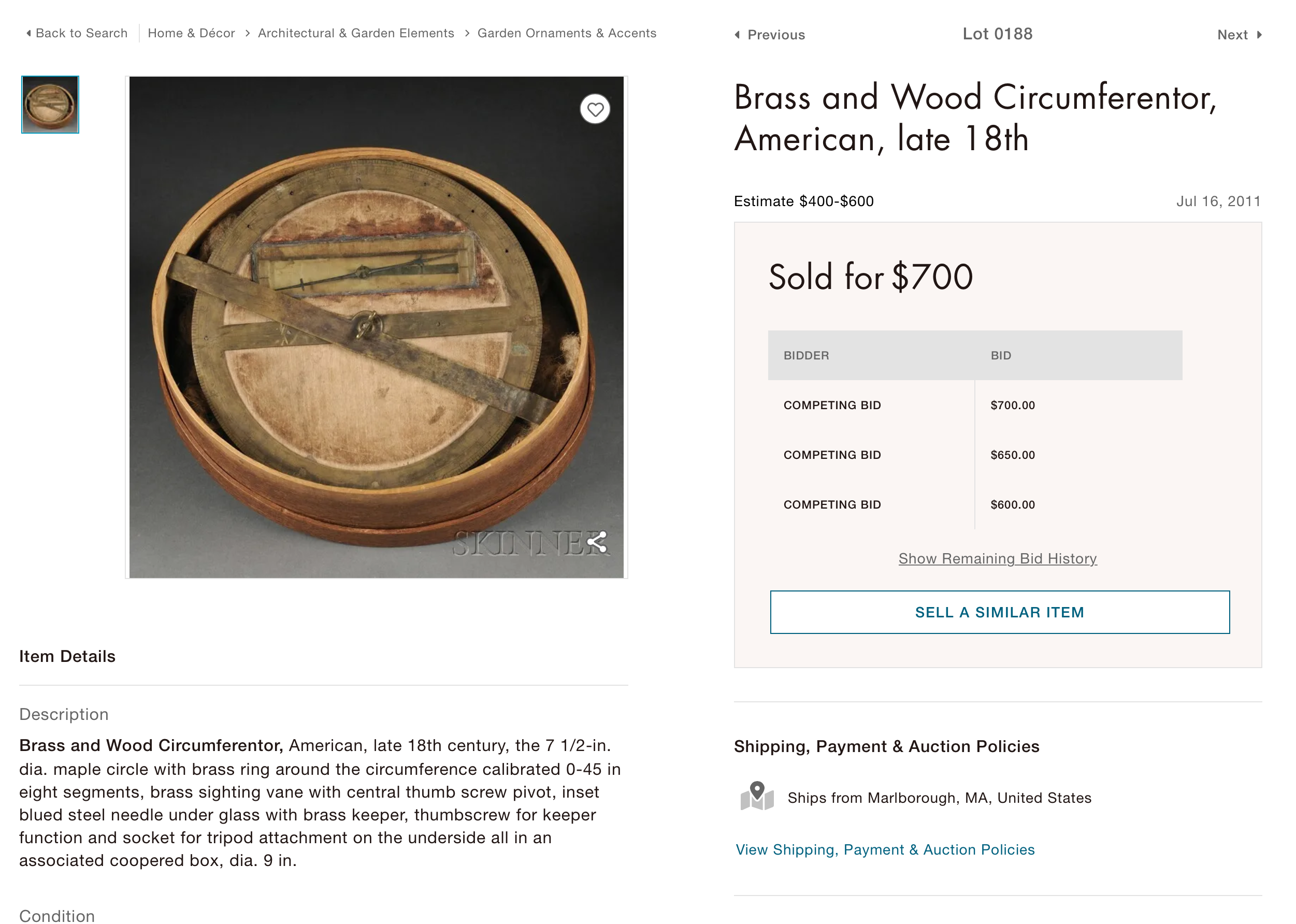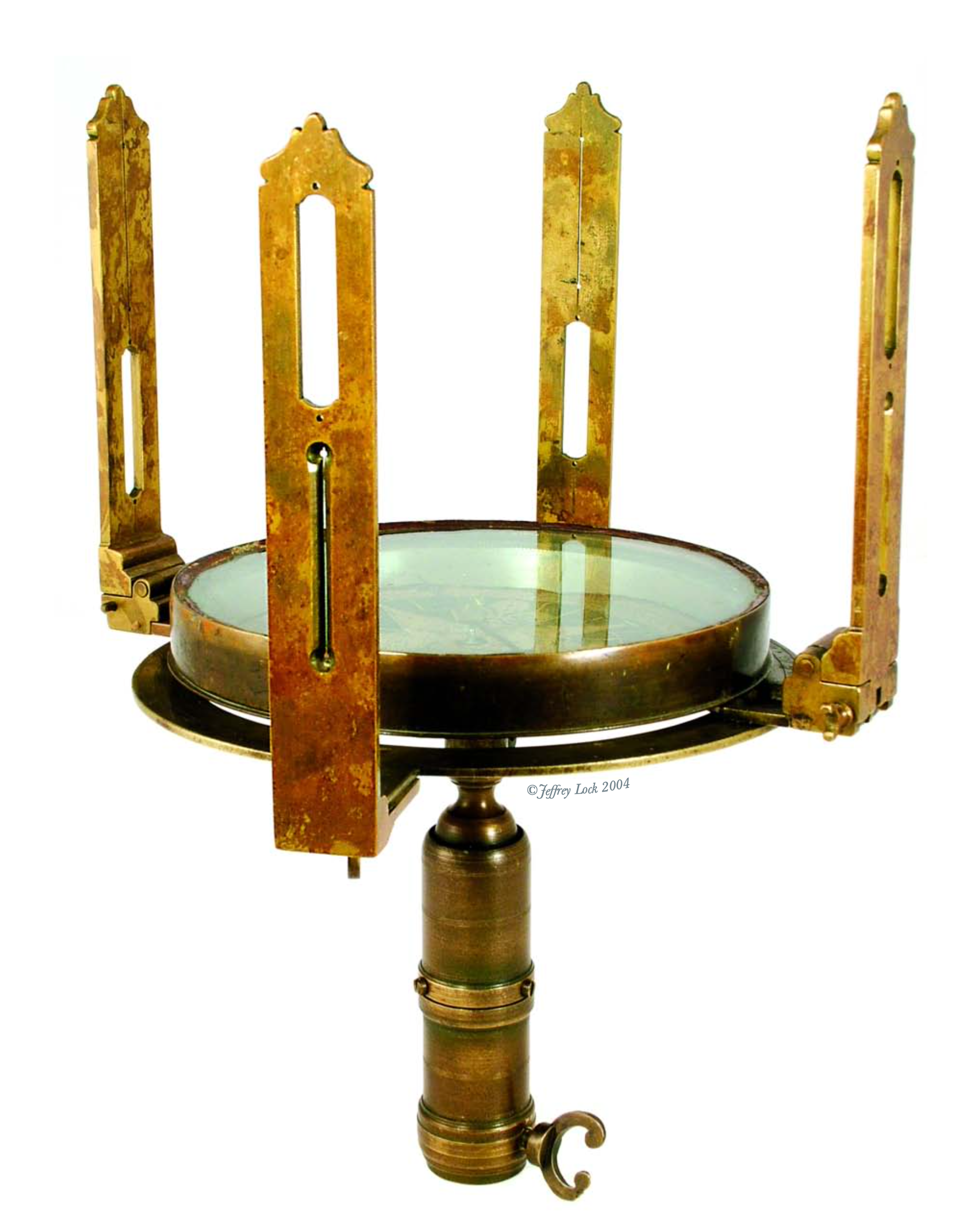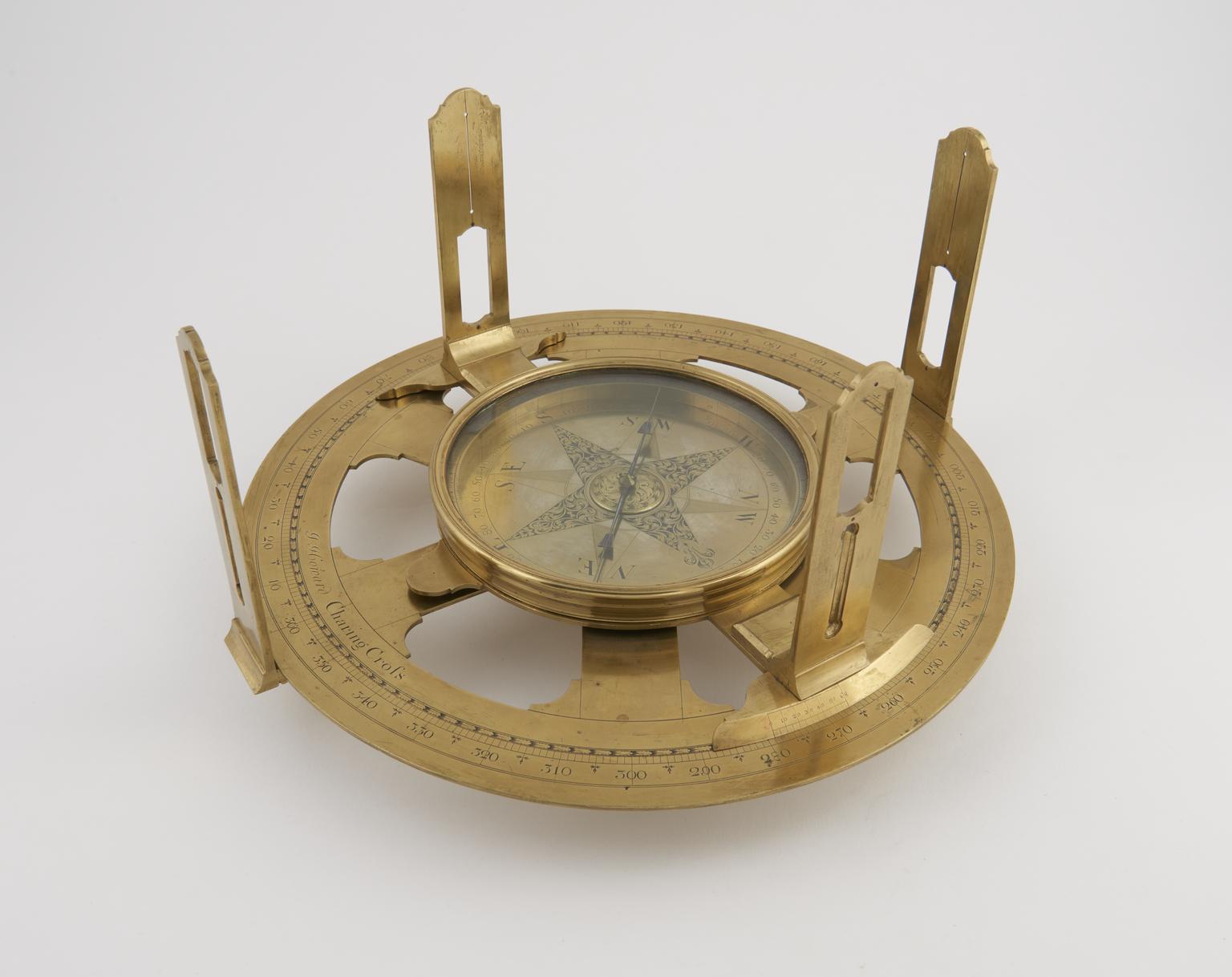
Beautiful Simple Theodolite Made by Howard Circa 1740
Collecting Simple Theodolites
Early Theodolites are very cool instruments - they were a very meaningful step above the surveyor compasses made and used in Colonial and Early America.
Given America's vast amount of heavily forested and uncultivated lands, the magnetic compass was the tool of choice for most of the surveys that happened in Colonial America. But there is evidence aplenty that Theodolites played a role in surveying Colonial America.
Collecting these early theodolites is a bit tricky. Only a handful were made in Colonial or Early America, and they command a huge premium if you are lucky enough to find one for sale. A fair number of early theodolites were likely imported into America, but it is usually impossible to know if any given instrument was used to survey in Early America or was imported into the country much later by an American collector. Interestingly, I didn't come across very many early theodolites either in the U.S. or UK during my research - I expected to find more.
NOMENCLATURE
Theodolite (aka Theodolet) - Prior to 1725, a full circle divided by degrees, usually with 4 sights. 2 sights were fixed at North and South, and 2 sights were movable. Could measure angles independently of the Needle. Most often but not always seen with a magnetic needle compass in the center. I refer to these as Second Generation Theodolites in my Ancient Surveying Instrument Section.
Improved Theodolite - Developed around 1725 with an illustration contained in Wyld's 1725 book on Surveying. Called an Improved Theodolite in Hammonds 1731 book on Surveying, which featured a neat illustration as well. An Improved Theodolite could measure vertical angles as well as horizontal, and featured a telescope. From 1725 until the early 1800's, these theodolites were often called an Improved Theodolite or a Telescopic Theodolite (or some version of that). After the Improved Theodolite dominated the market, sometime around 1800 or so these instruments became known as just "Theodolites". Later on, they would sometimes be called "Altazimuth Theodolites" by Museums and collectors. See the 1982 Whipple Museum Catalogue (Catalogue Cover) for the a really good explanation of the term "Improved Theodolite". I refer to these as Third Generation or Altazimuth Theodolites in my Ancient Surveying Instrument Section.
Simple, Plain or Common Theodolite - After the Improved Theodolite was developed around 1725, the non-Telescopic 2 and 4 vaned Theodolites were referred to as a "Theodolite" or a Simple or Common Theodolite. I think I've seen it referred to as a Plain Theodolite as well. Unfortunately, many collectors and auction houses now call these 2 and 4 vaned non-telescopic instruments "Circumferentors". "Circumferentors" was an early term used to refer to a surveyors compass. See the 1982 Whipple Museum Catalogue (Catalogue Cover) for a really good explanation of the term "Simple Theodolite".
Theodolite is the what colonials and early Americans called the 2 and 4 vaned instruments. So if you are researching these instruments in old books and newspapers, you search for "Theodolite". If you are looking for current auctions for these instruments, "Circumferentors" will generate the most hits.
For the sake of clarity, I'm calling the 2 and 4 vaned non-telescopic Theodolites here "Simple Theodolites".
Why Did Colonial Americans Import Simple Theodolites?
Theodolites had two meaningful advantages over magnetic compasses: Improved theodolites could measure independently of the magnetic needle and were more precise because they generally had verniers that could measure to the nearest 10 minutes or so. On the downside, Theodolites were significantly more expensive to buy than a magnetic compass.
In sum, Theodolites offered the promise of much more precise surveys, but at a very significant cost.
Interestingly, in 1770 Maryland apparently enacted a law that required each County in Maryland to own a Theodolite for purposes of surveying within the county. If nothing else, that law shows that the advantages of Simple Theodolites were well known to many people.
Given the trade-off between precision and cost, Theodolites were likely used mostly in surveys requiring a higher level of precision than a magnetic compass could offer - e.g., surveys of large wealthy landowner estates.
How Many Simple Theodolites Were Used America?
Nobody knows, of course, but I suspect that a fair number of Theodolites were imported into the America and some were even made here. I found numerous pre-1825 newspaper listings involving theodolites while searching the internet for a few hours. To me, that suggests that there were quite Simple Theodolites that were used here.
A number of makers advertised Theodolites for sale. I suspect most were imported from the UK by the makers and then resold here. Only a handful of Simple Theodolites with a known American maker have surfaced, which supports my suspicion that most Simple Theodolites used in America were imported.
Below are a good number of ads offering Theodolites for sale
1762 Rivington Ad
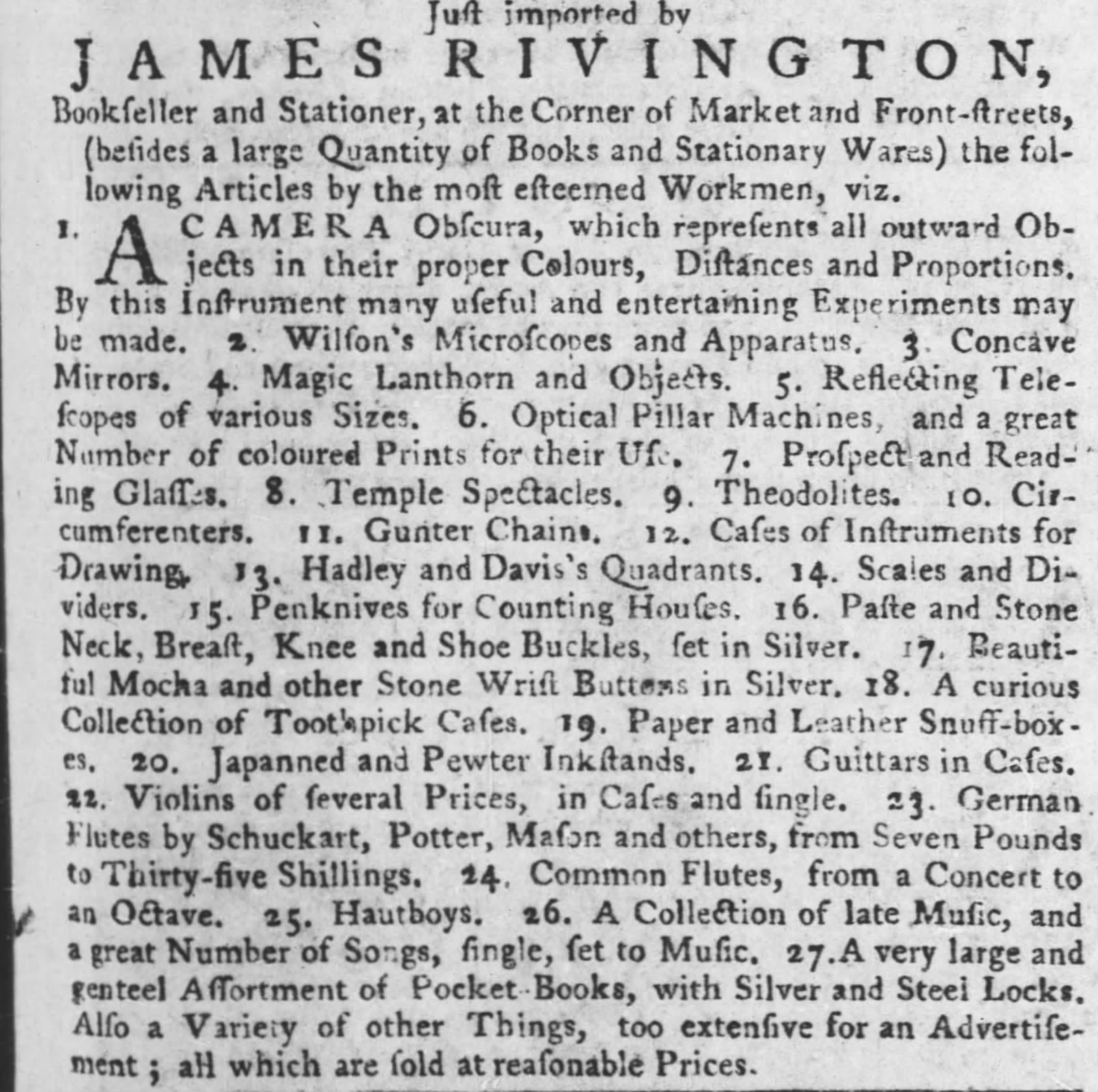
1766 Condy Ad
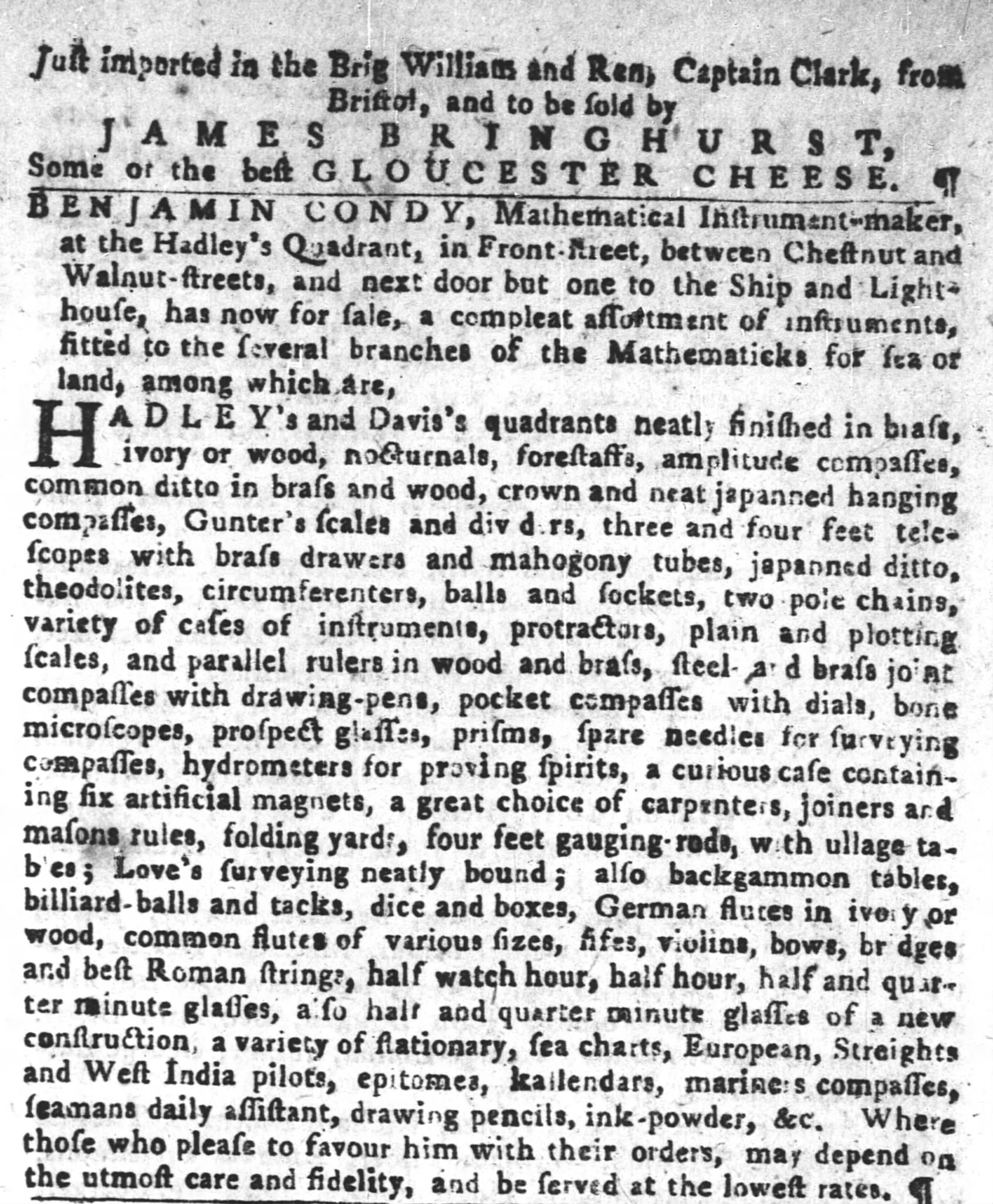
1798 Jacks Ad
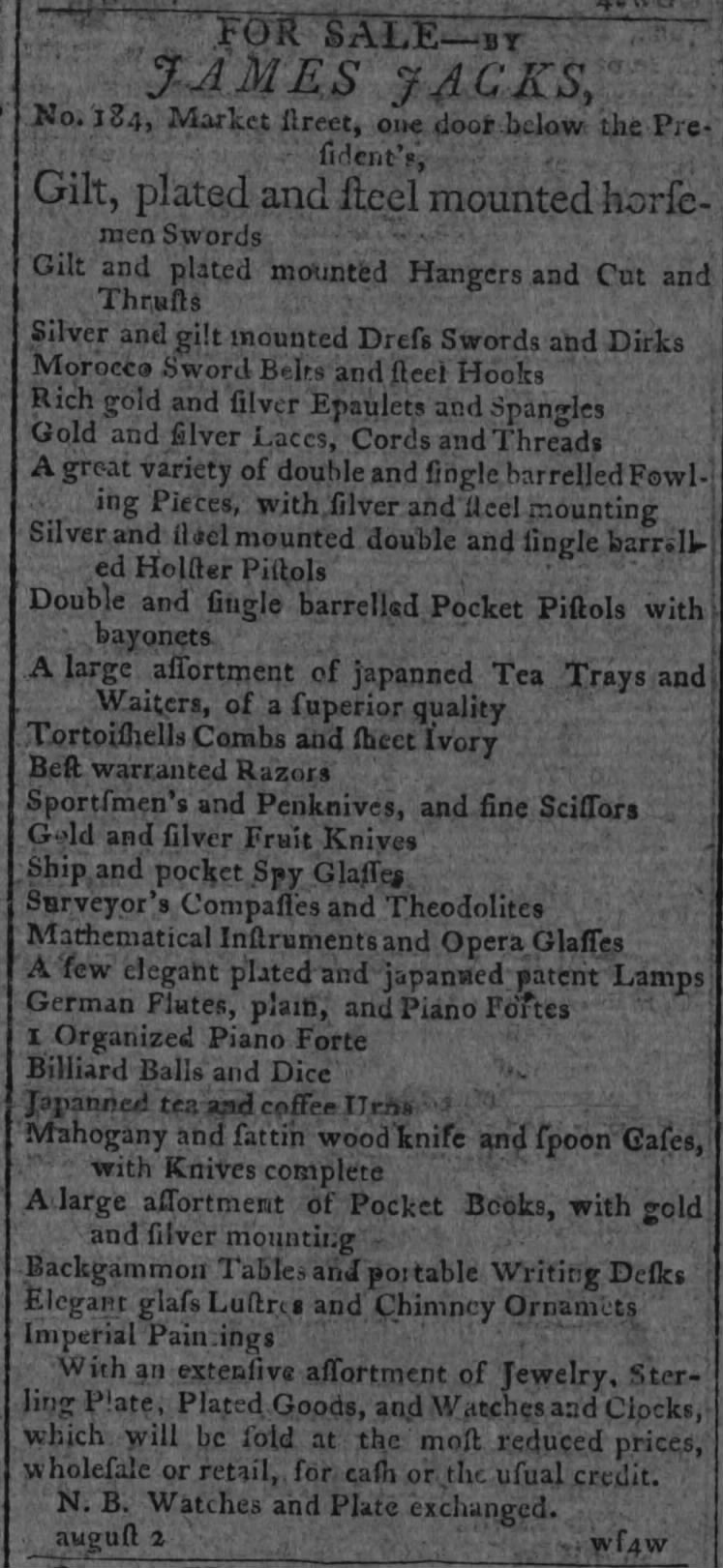
1761 James Ham Ad
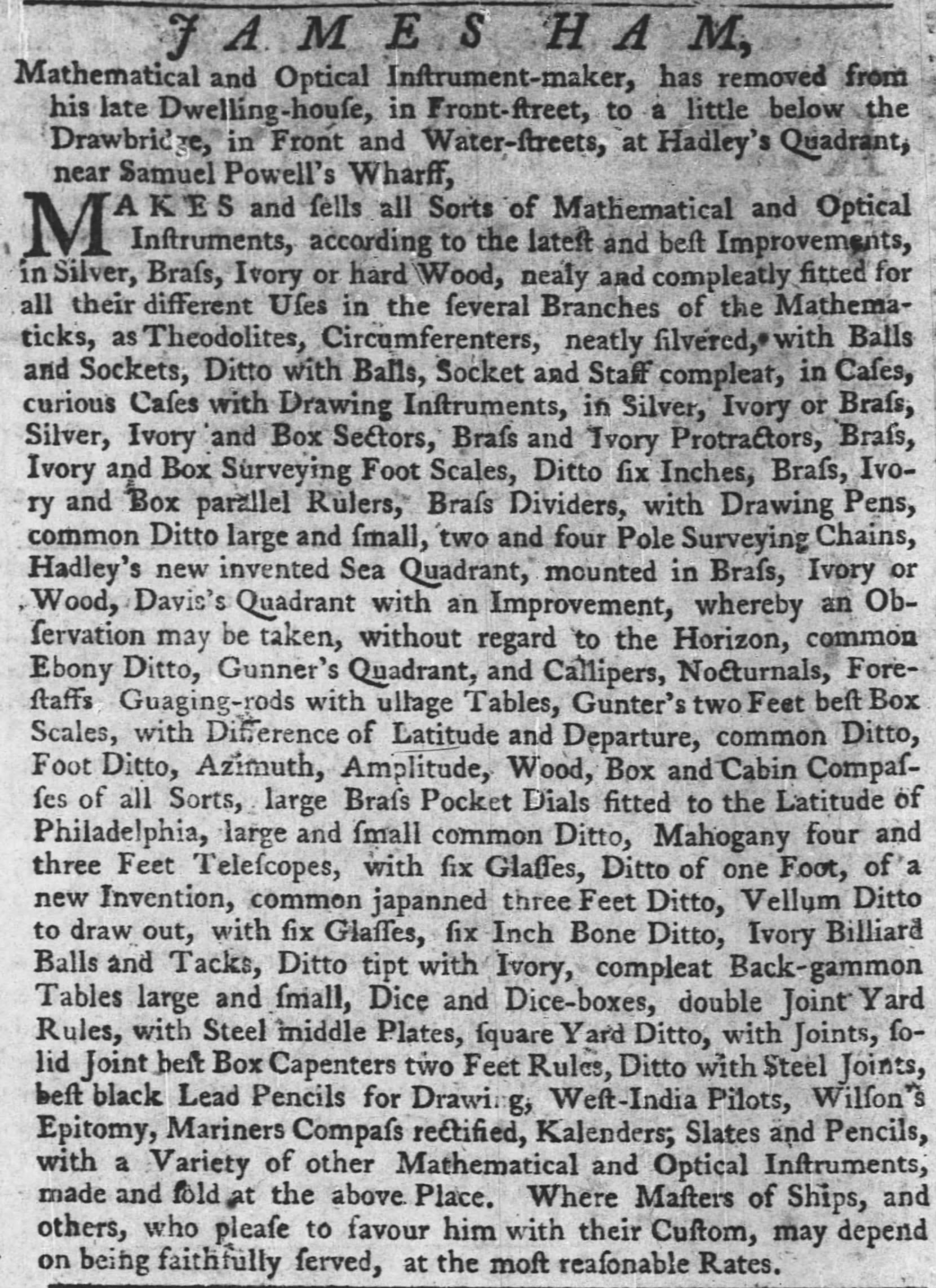
1741 Dabney Ad
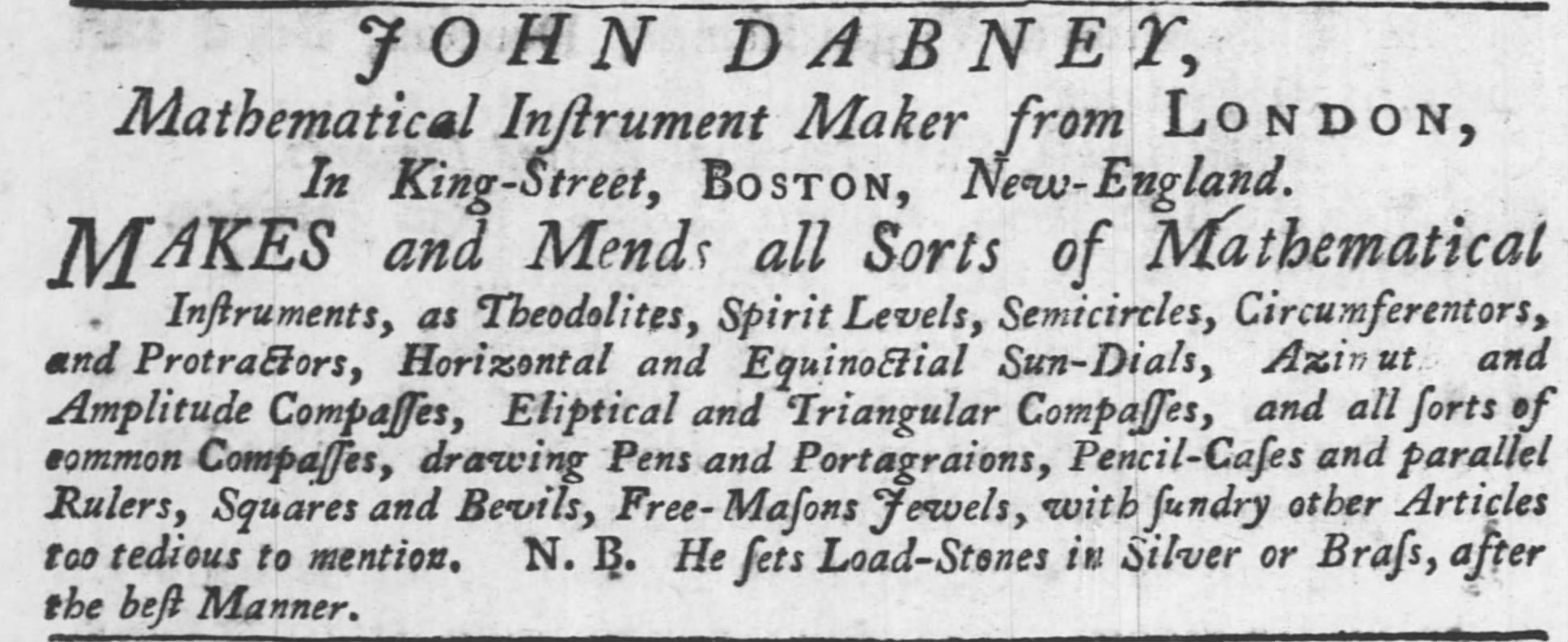
1788 Greenwood Ad
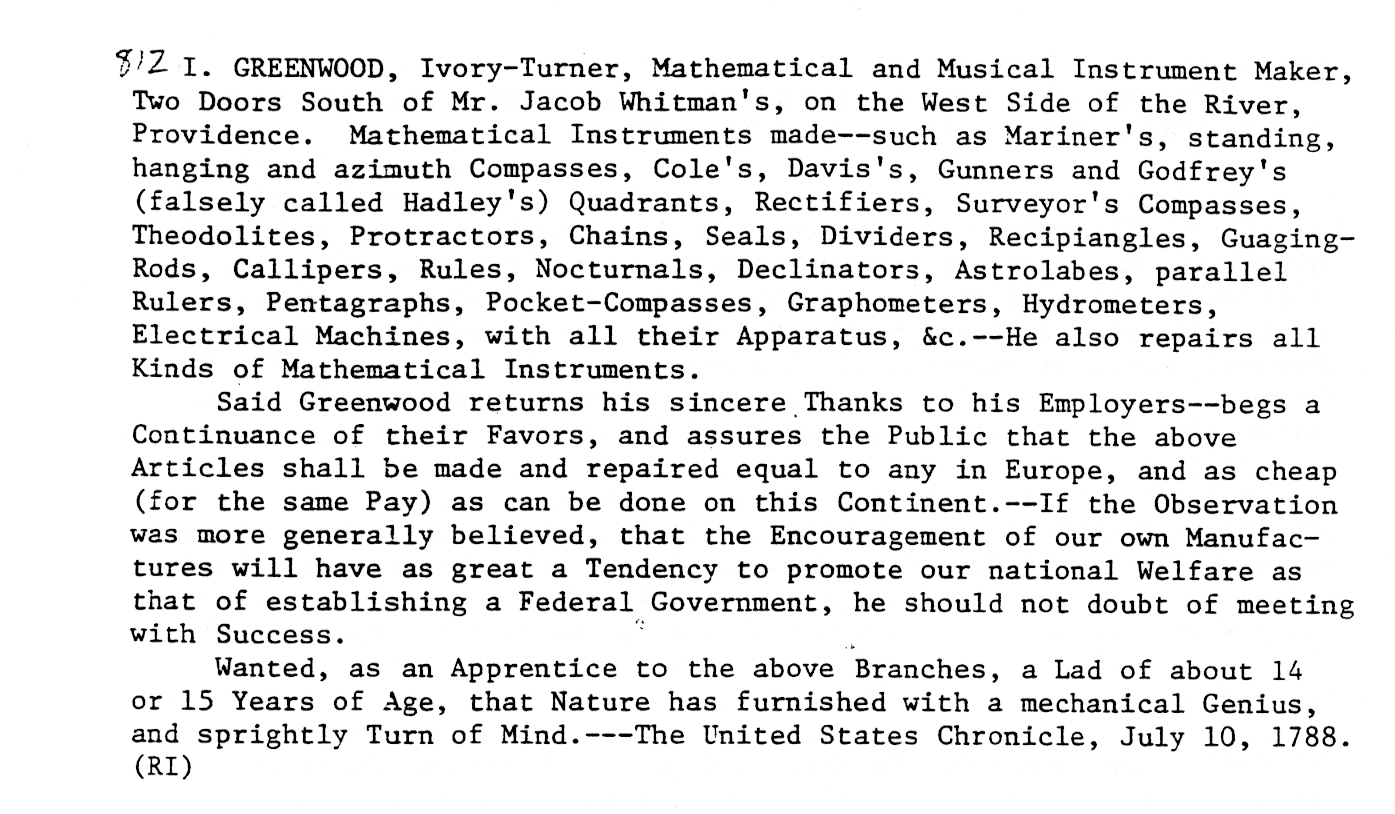
1772 Piper Ad
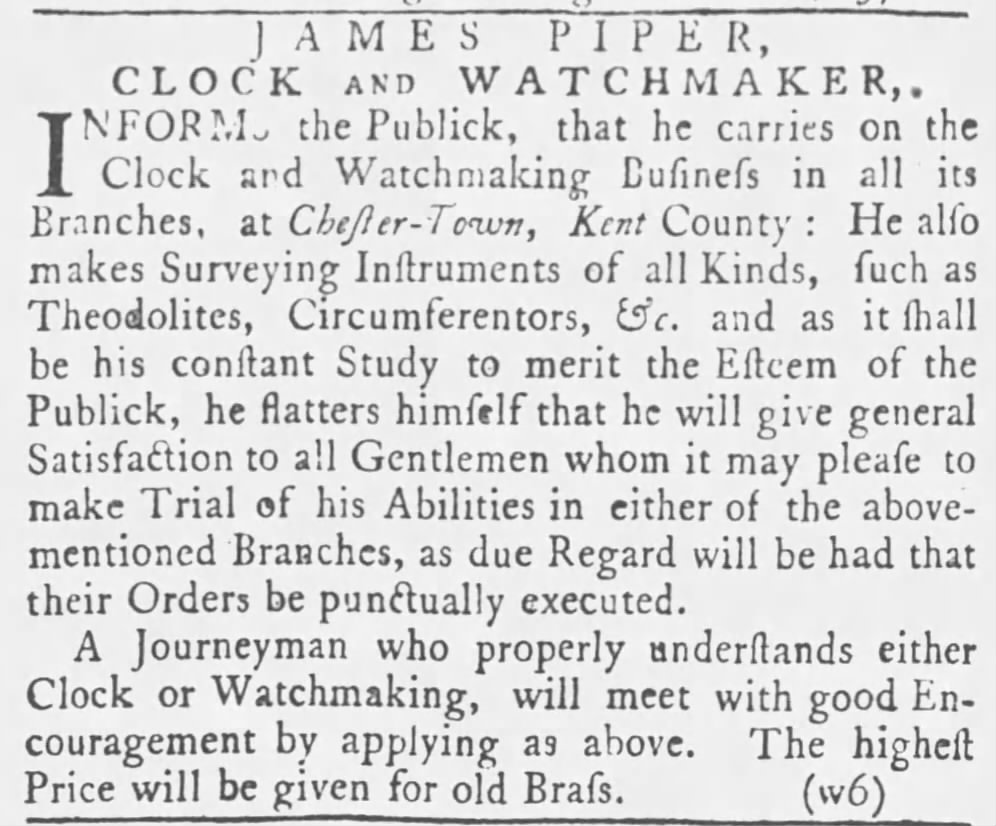
1773 Newell Ad
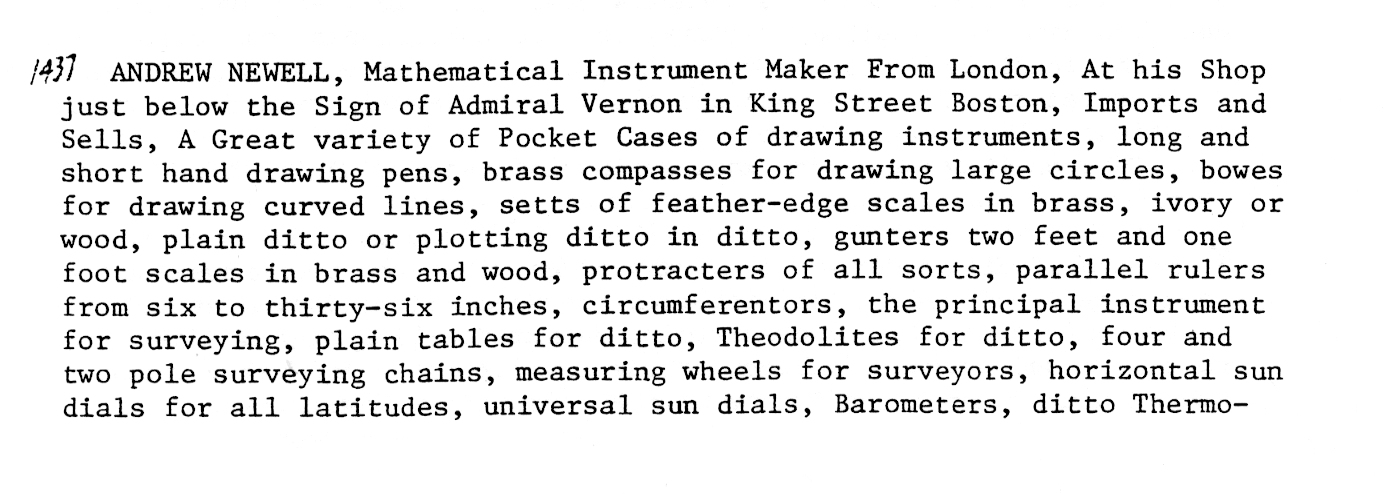
1794 Dean Ad

Some Simple Theodolites Made in America
Very few if any.
From the remnants of a compass made by David Rittenhouse, to is believed that Rittenhouse made at least one Improved Compass. The National Museum of American History also holds a Telescopic Theodolite made by Hagger of Baltimore - and dates the Instrument between 1816 to 1824. I think it might be a bit later than that. Either way - I think that is becoming a bit removed from the Colonial America Era.
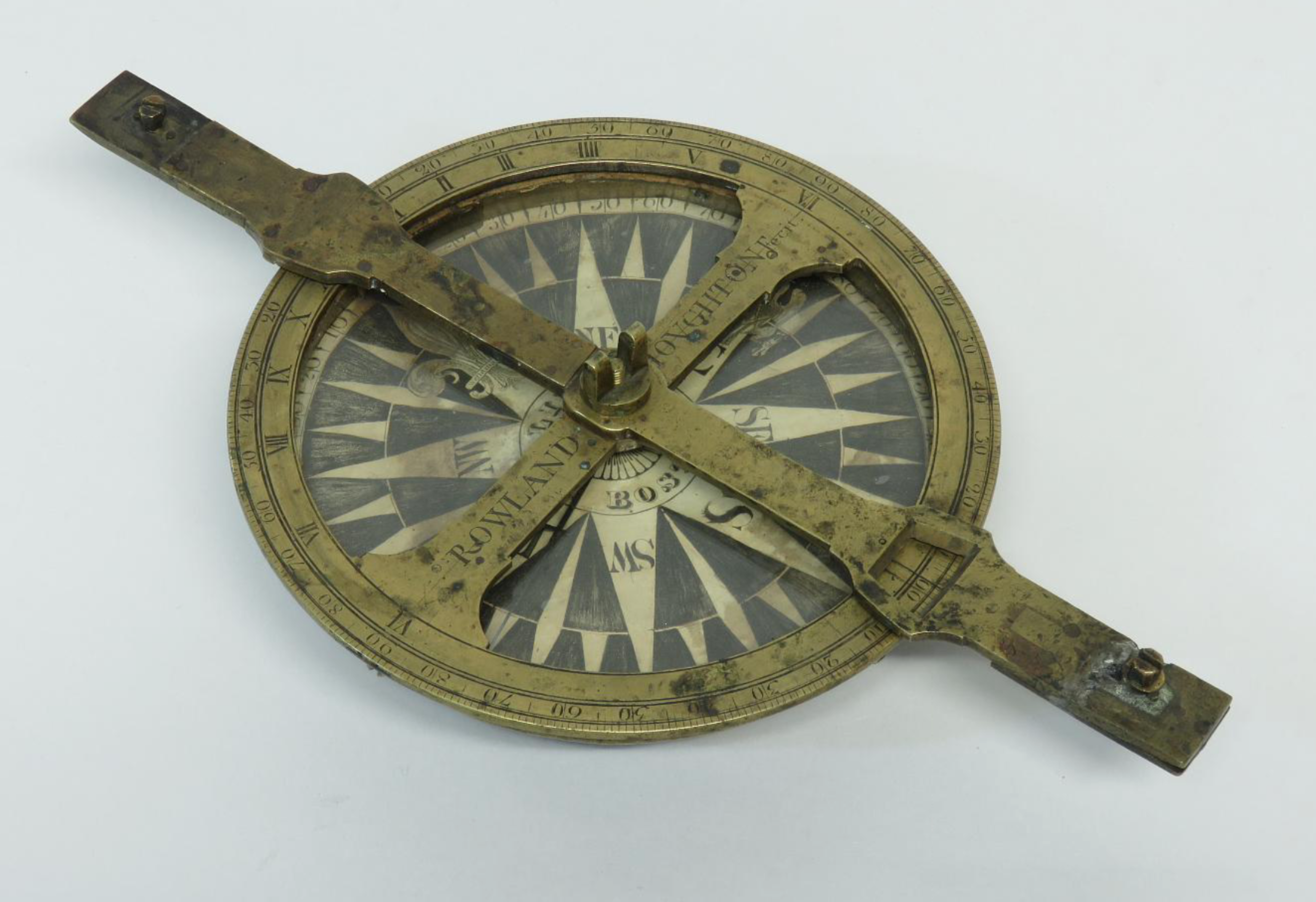
Rowland Houghton patented his Theodolite in 1735, and this wonderful example resides in the National Museum of American History
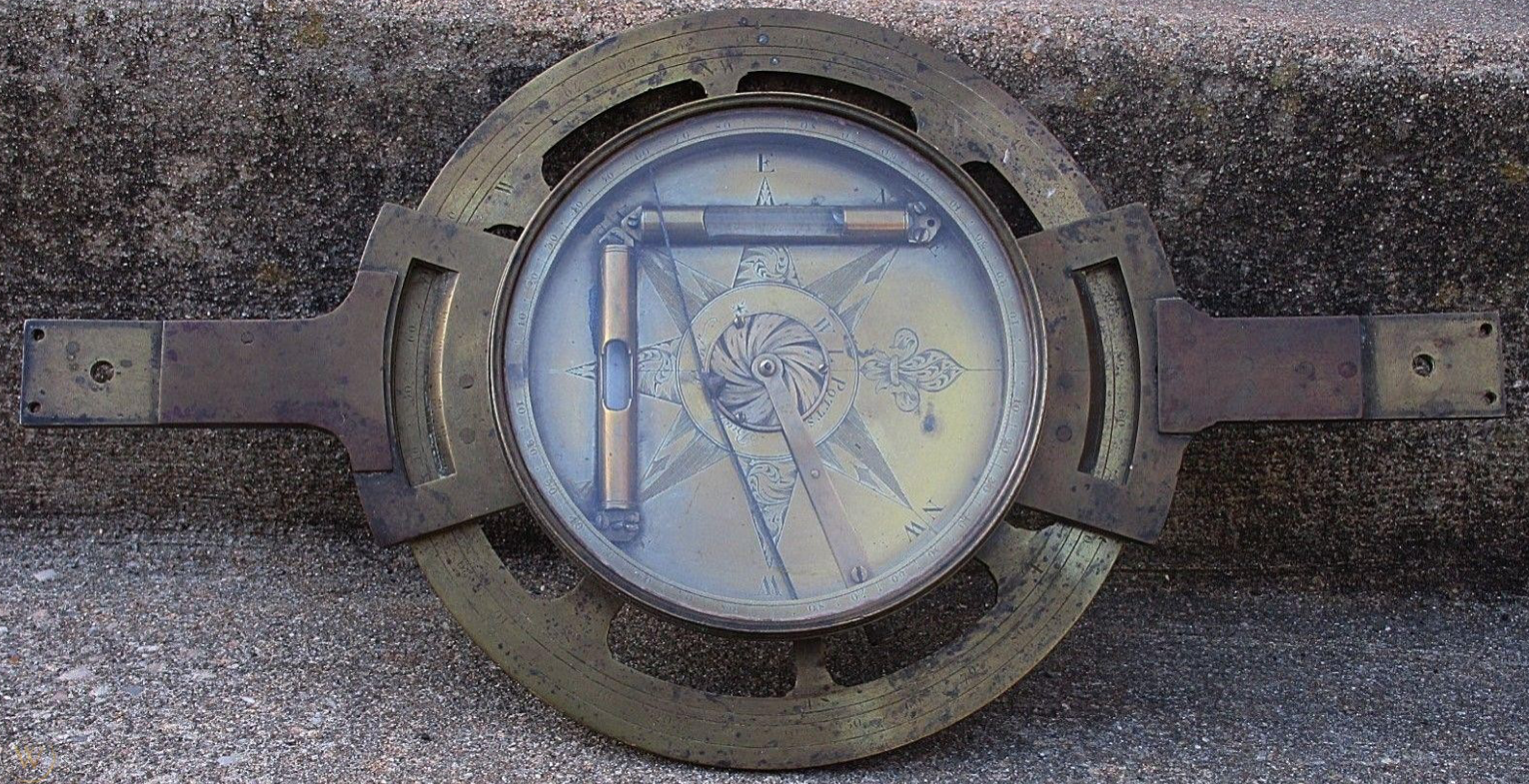
William Potts was an extremely talented maker and engraver of compasses. This is the only known Simple Theodolite made by Potts.
Richard Patten Simple Theodolite (Lacks Vertical Arc)
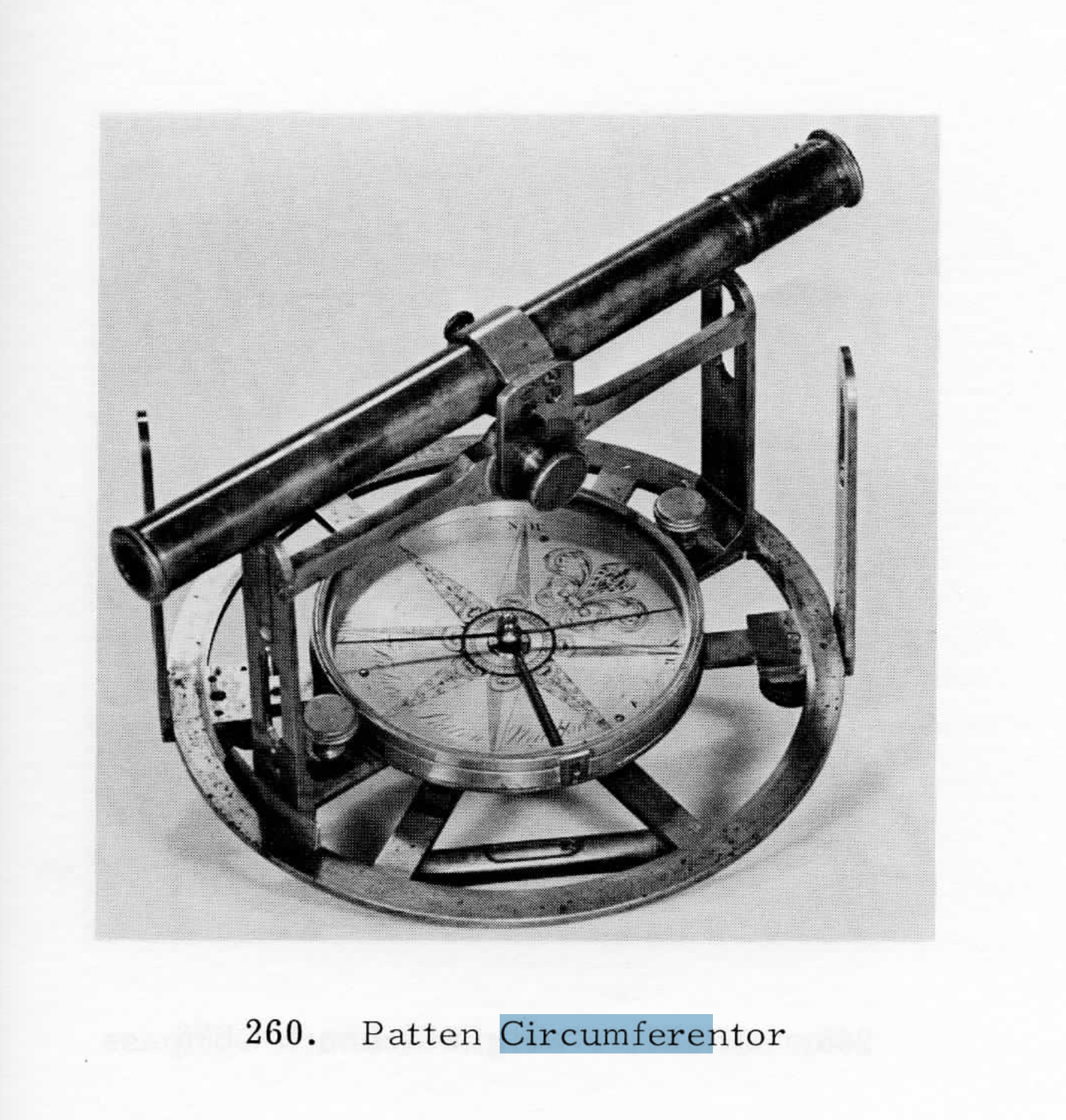
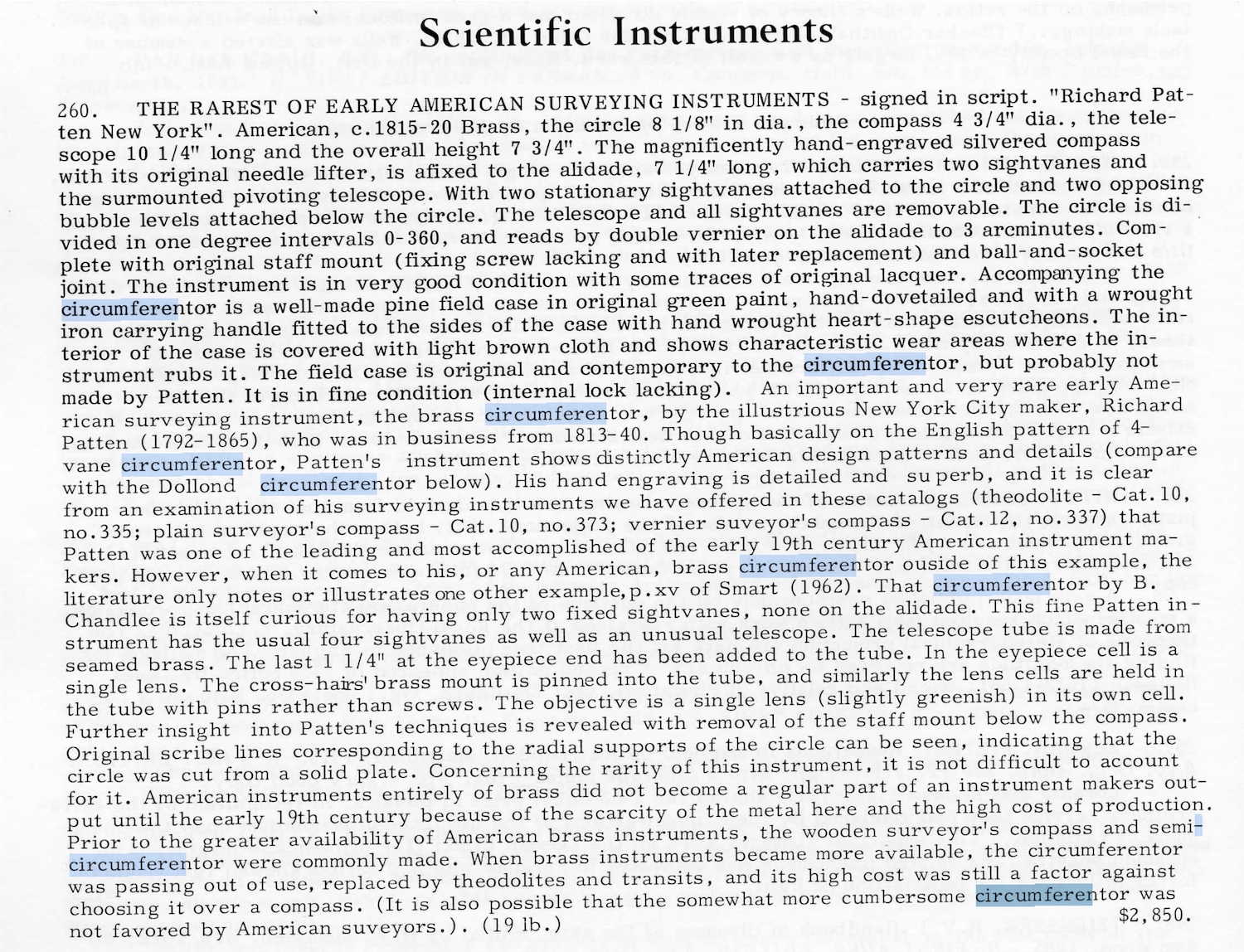
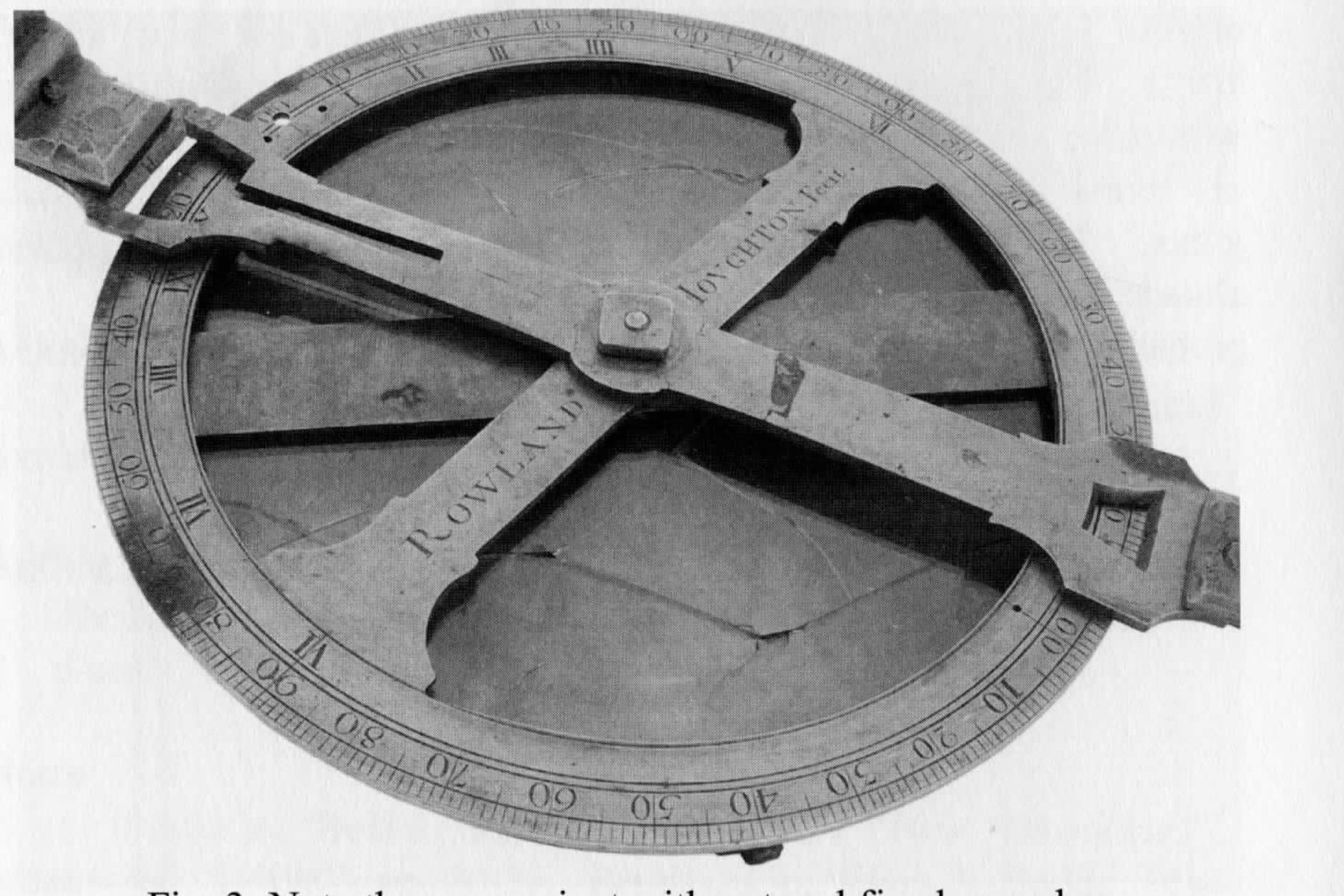
Fantastic Rowland Houghton Theodolate, as described in the Rittenhouse Journal (click on title for a PDF of the article).
Fantastic Thomas Greenough Theodolite, as described in the an American Surveyor article by Jeff Lock (click on title for a PDF of the article).
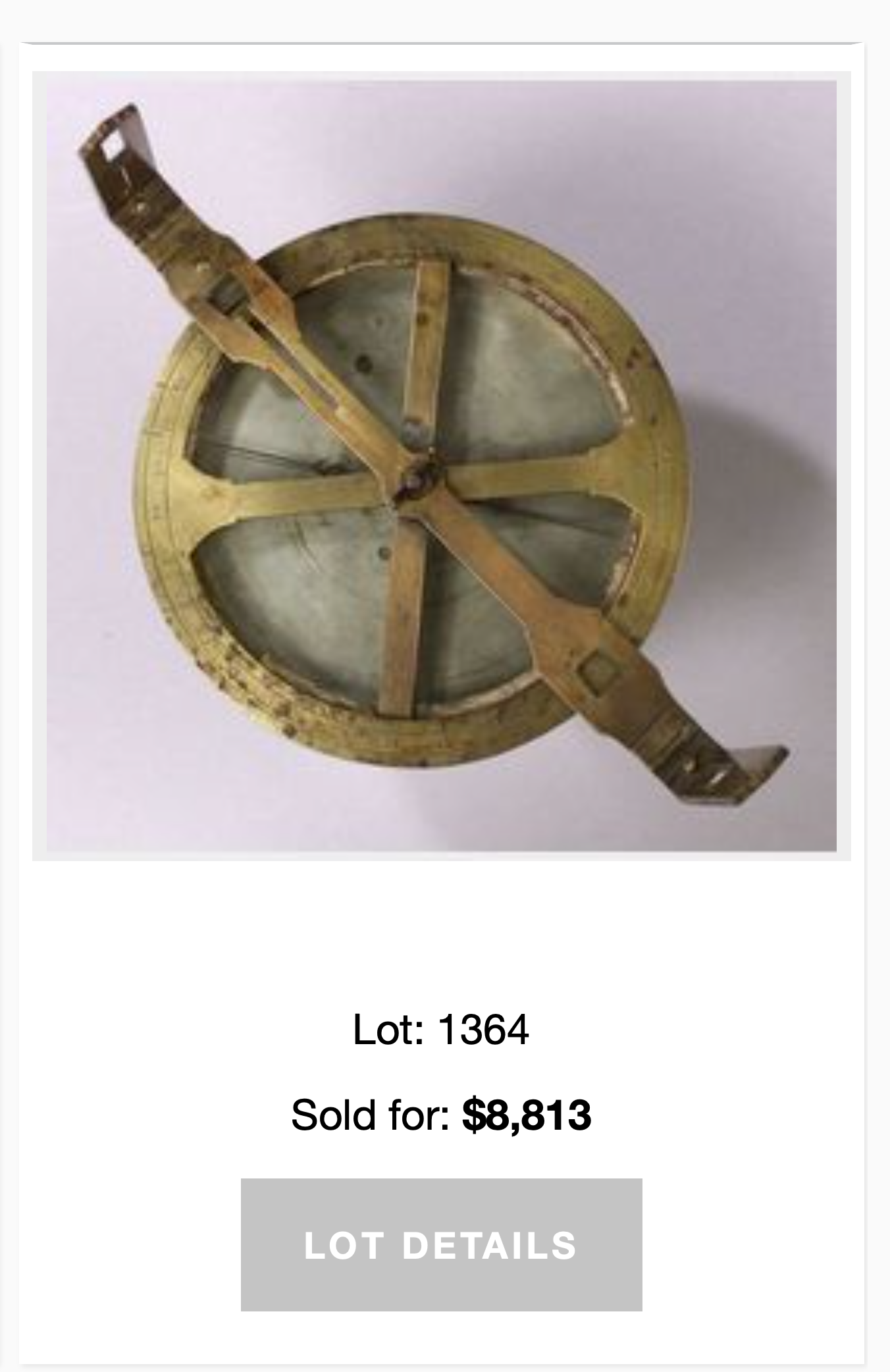
Fantastic Theodolite - sold at Skinner Auction in 2005 (click on title to go to Skinner listing).
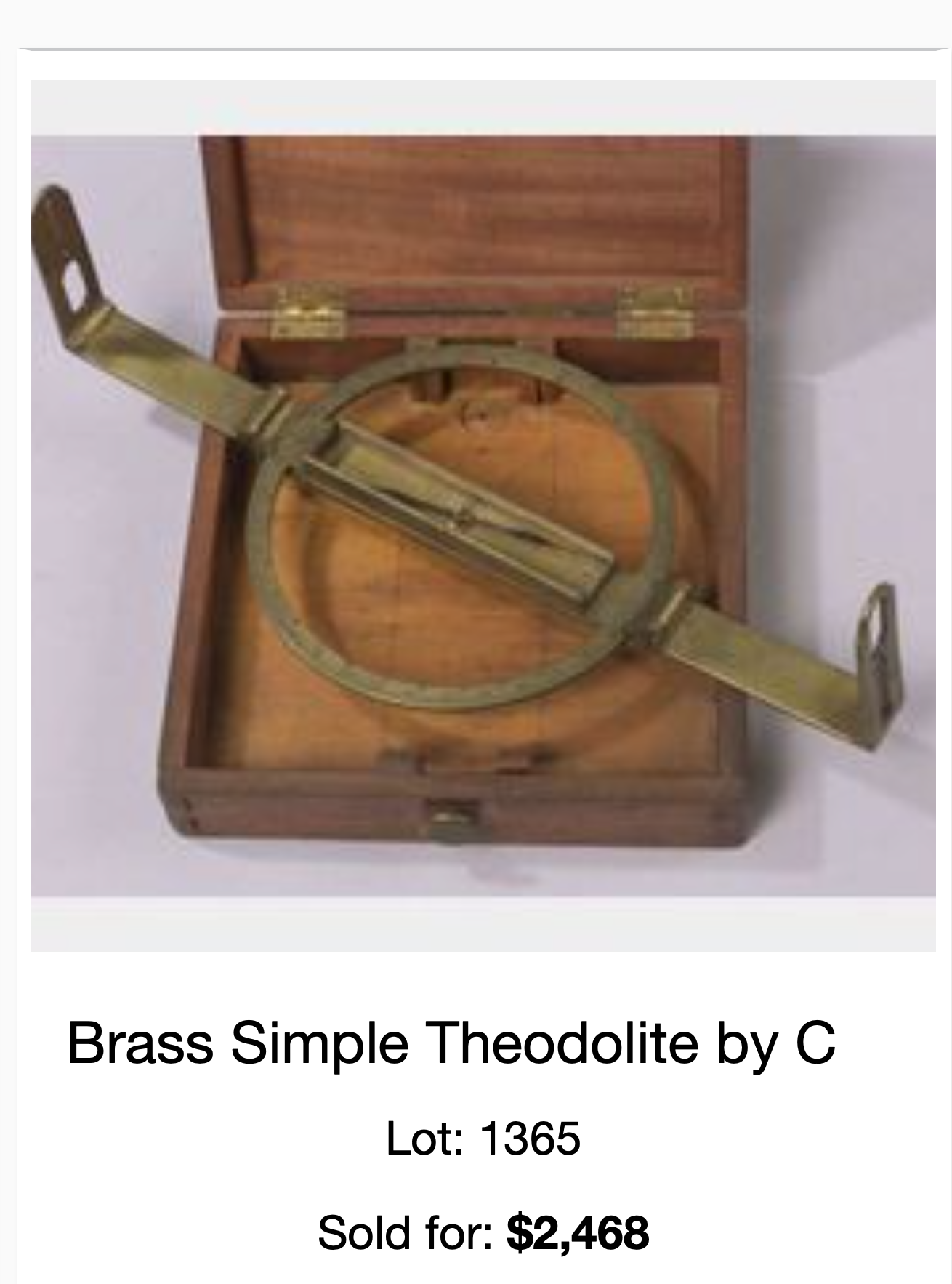
Very Cool Theodolite with a trough compass - sold at Skinner Auction in 2005 (click on title to go to Skinner listing).
Some Historical Made in the UK Simple Theodolite Transactions
The sales of American-made Simple Theodolites are all reflected above. American-made Simple Theodolites are very special instruments, and I would expect to see enthusiastic bidding if one comes up for sale.
Pre-1800 UK made theodolites are fairly scarce, and based on what I have seen you should expect to pay $1500 on up depending on quality, age, maker, etc. In my research I did not come across a single UK made Simple Theodolite that was used in early America. There must be some out there however.
Below are some of the more interesting offerings I came across.
Fall 1978 Moskowitz Ad
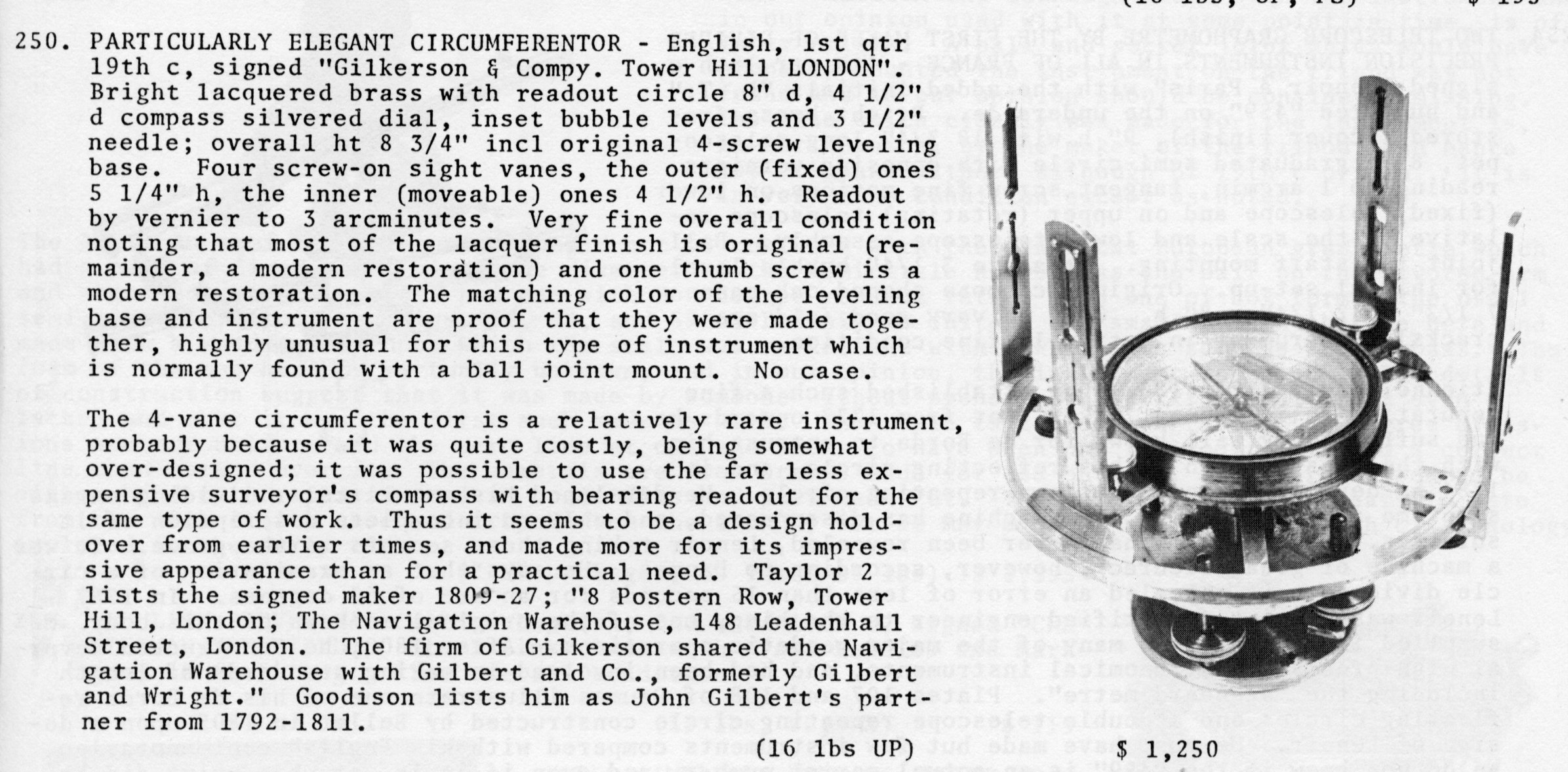
Fall 1981 Moskowitz Ad
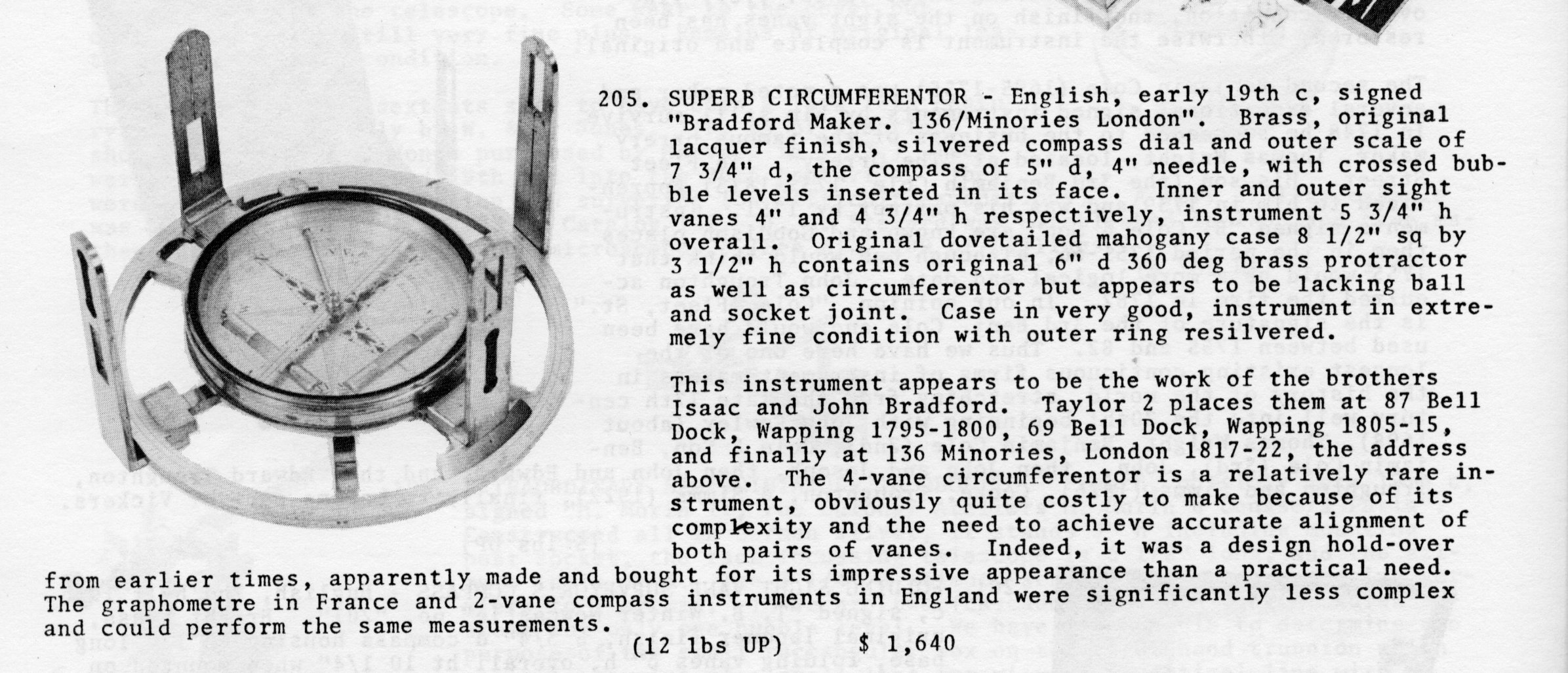
Spring 1982 Moskowitz Ad
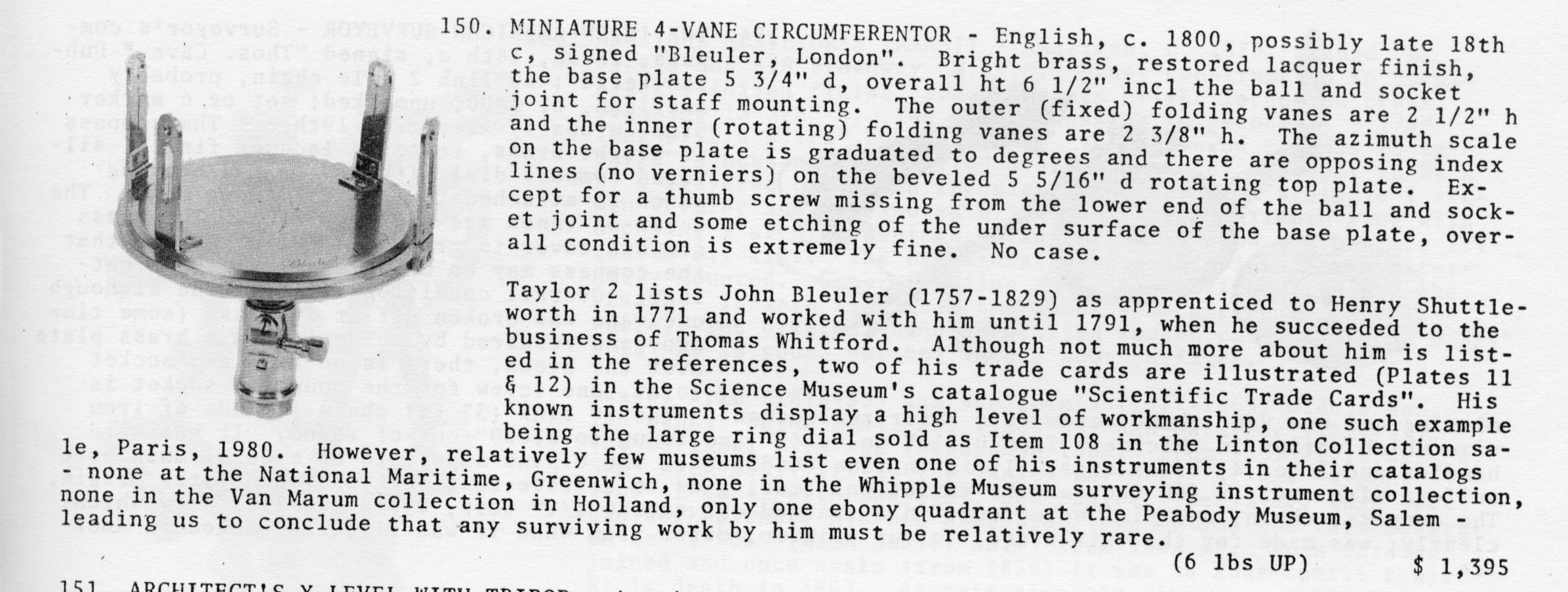
Spring 1987 Moskowitz Ad
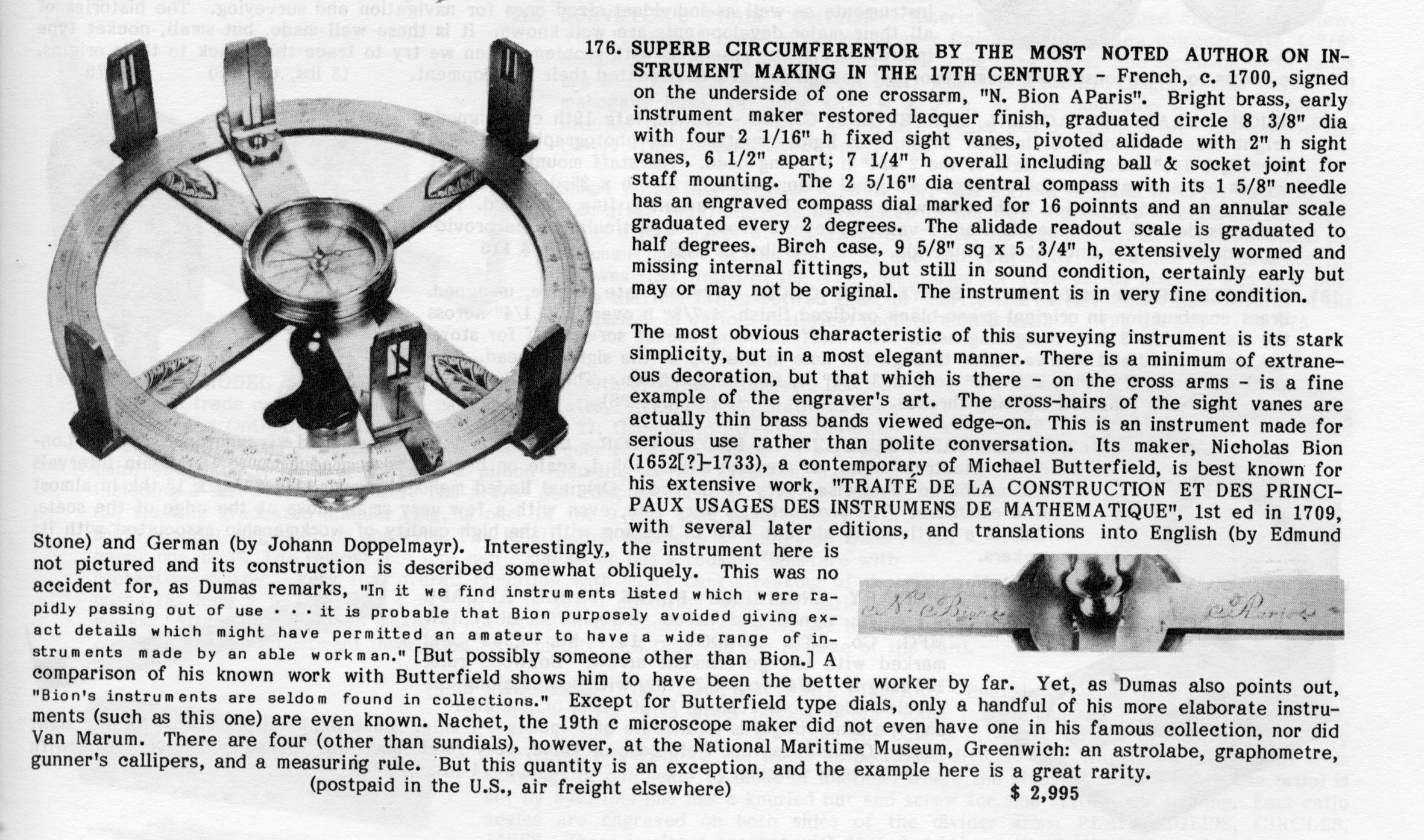
1980s Antiquarian Scientist Ad
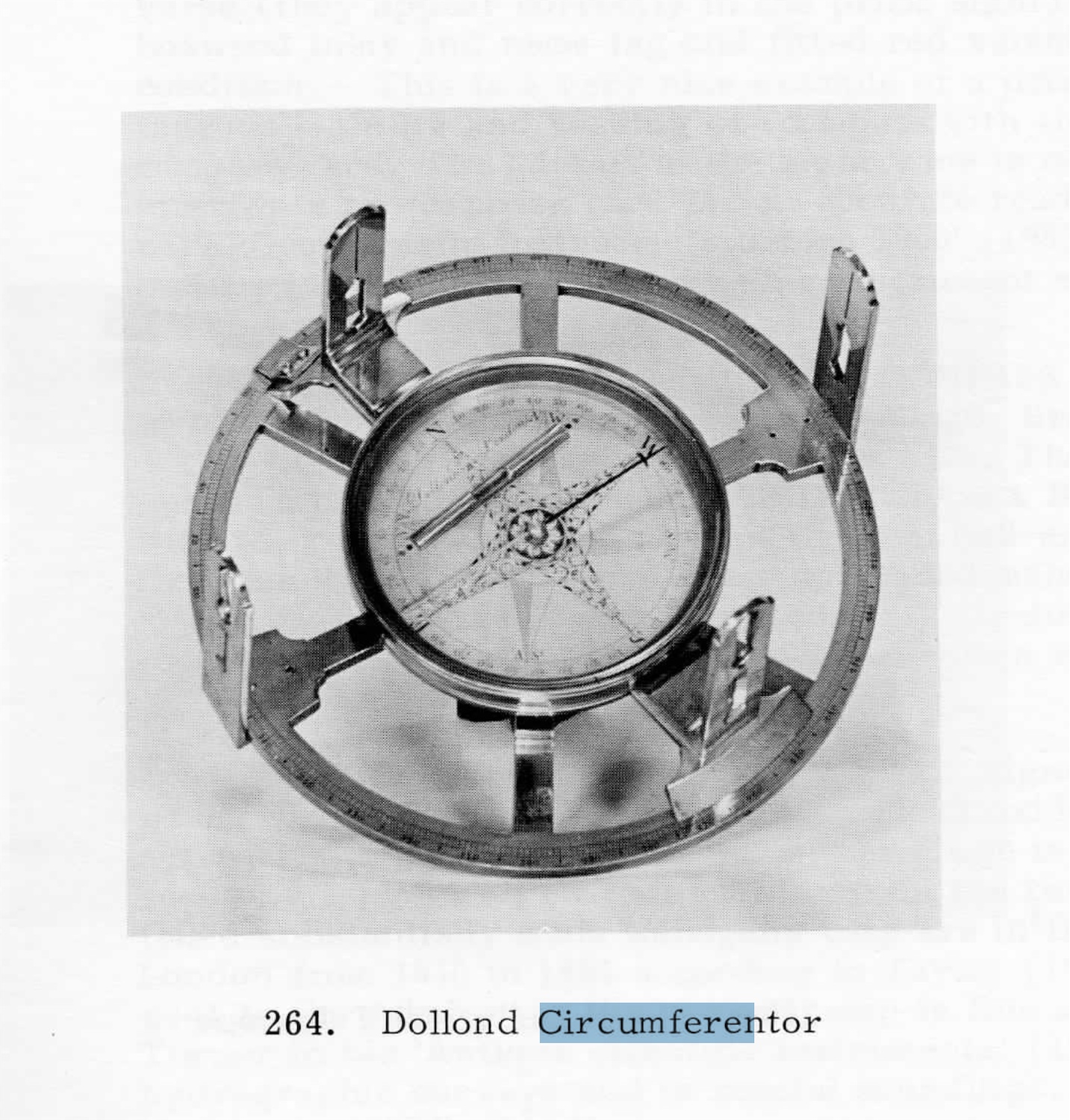

1980s Antiquarian Scientist Ad
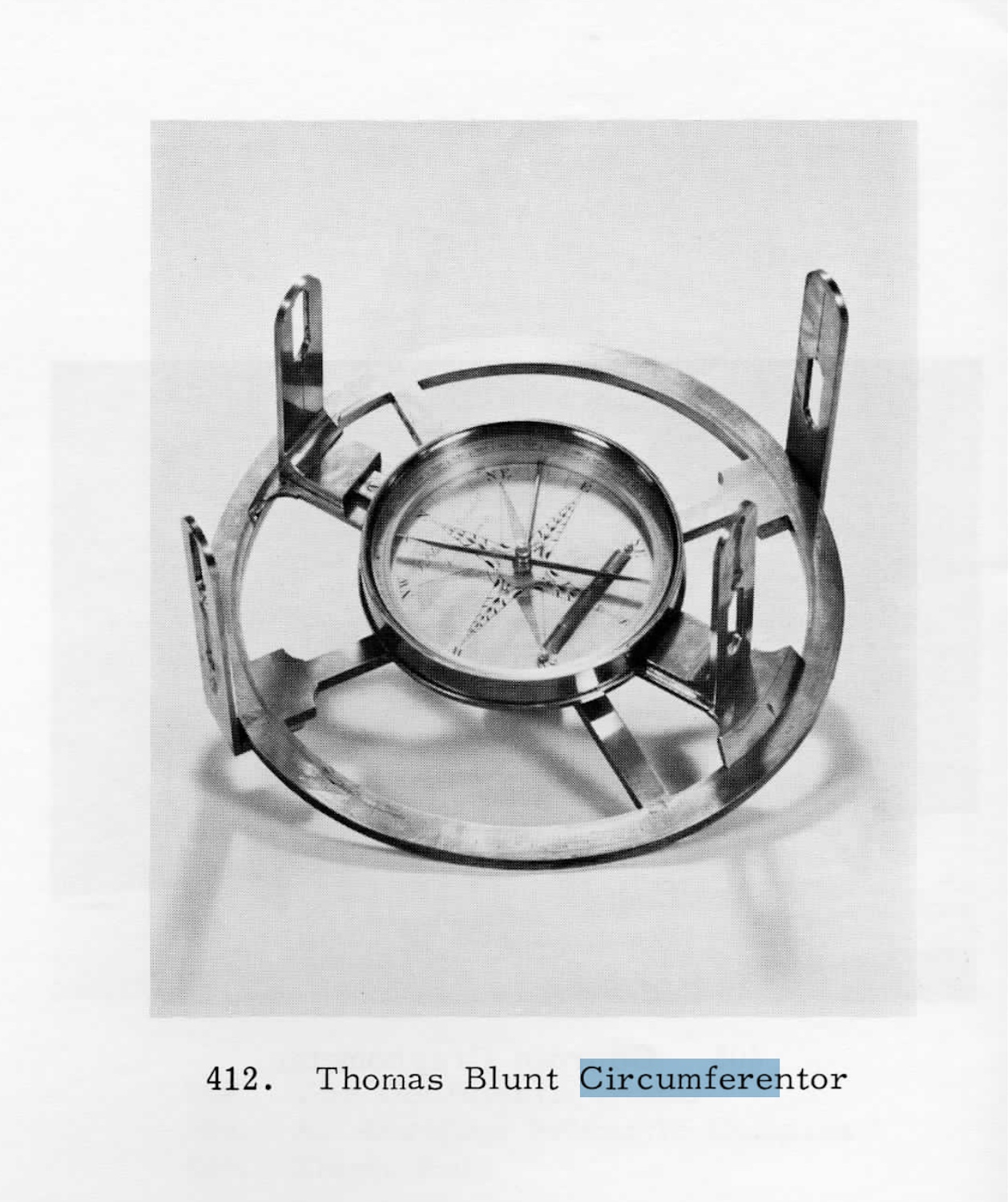

1980s Antiquarian Scientist Ad
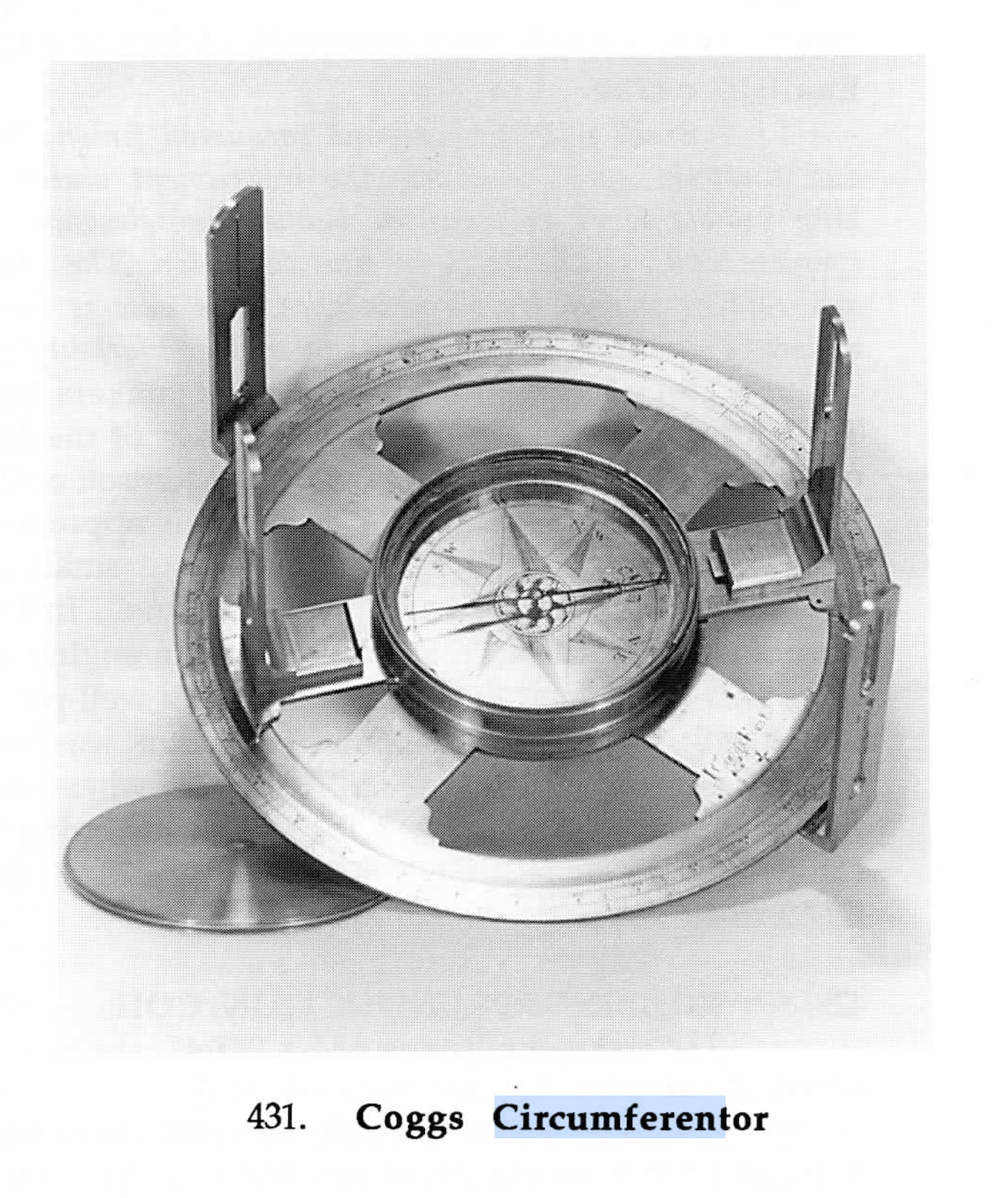
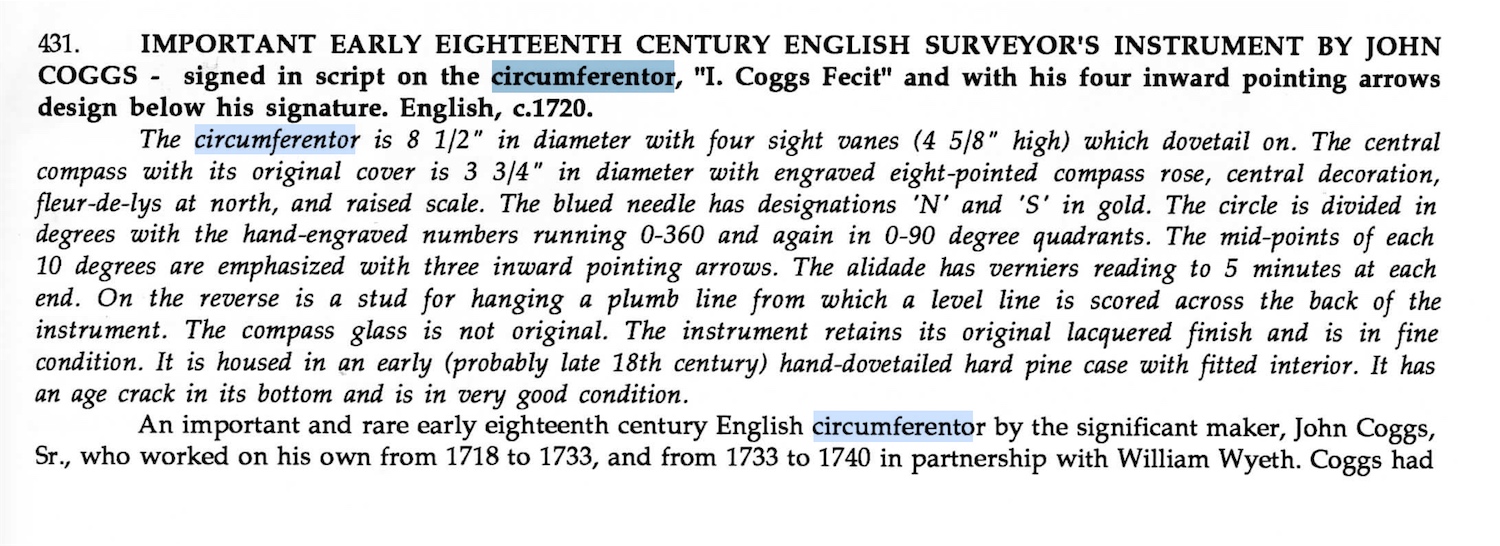

1980s Antiquarian Scientist Ad
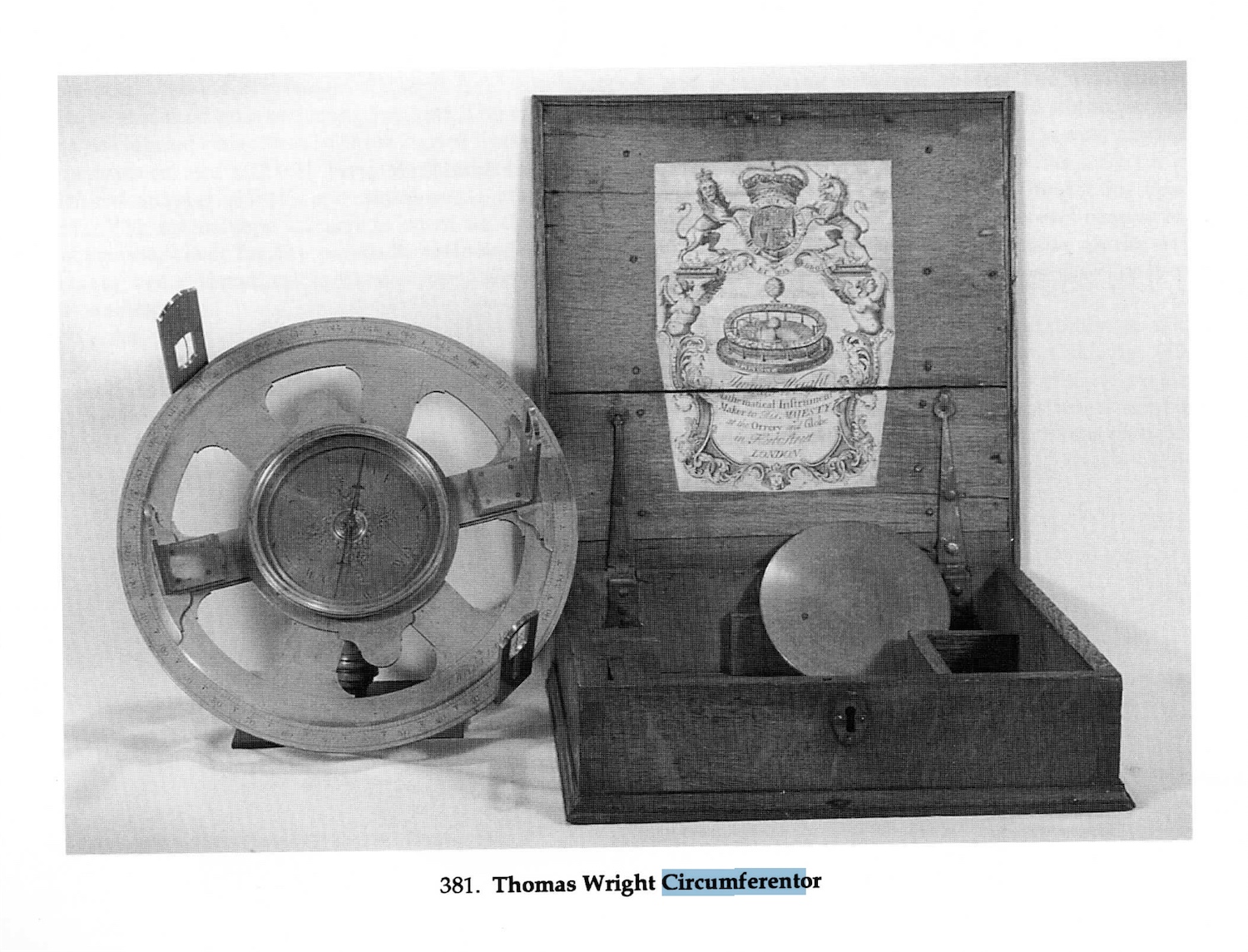
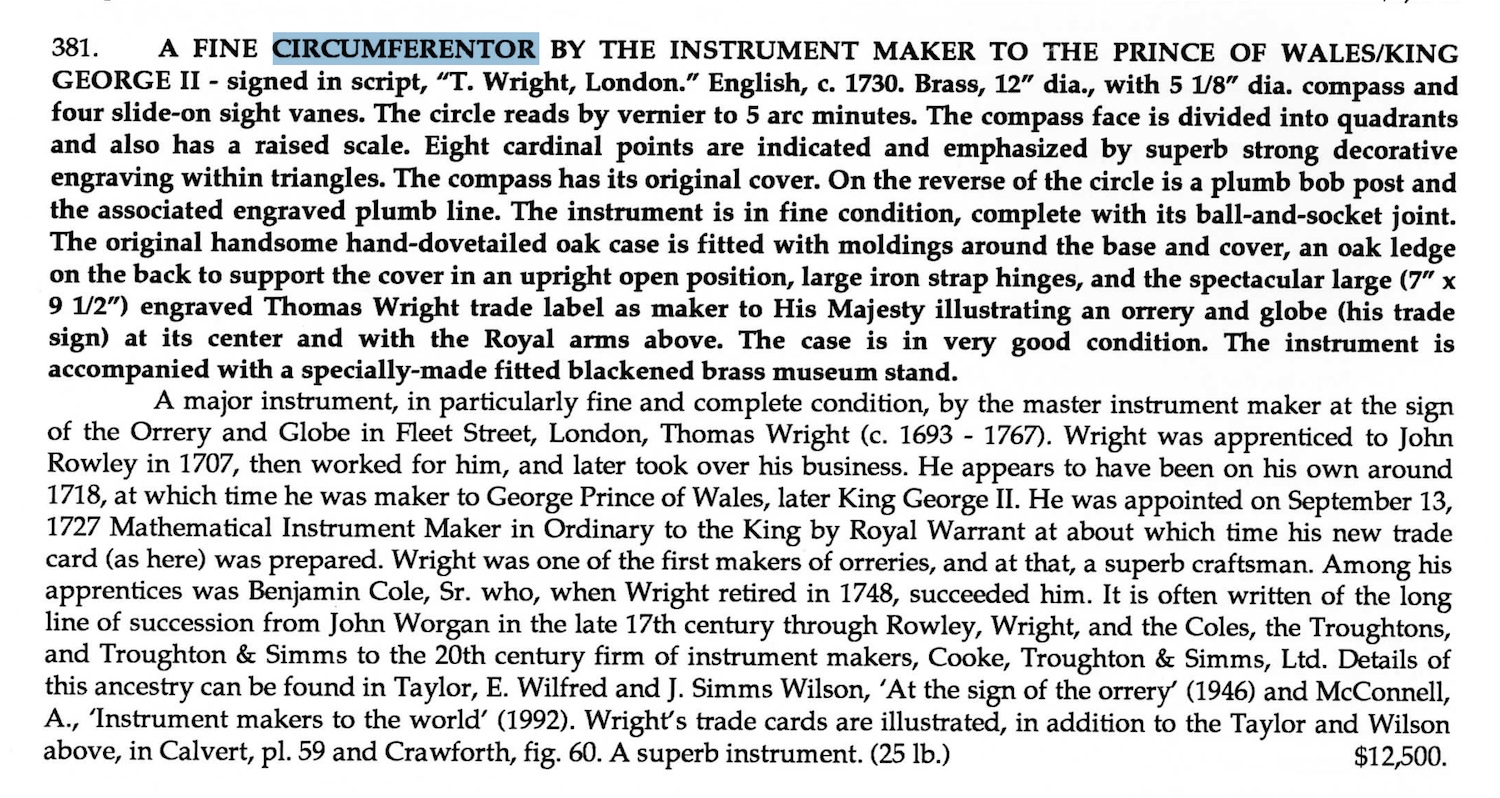
2005 Skinner Auction
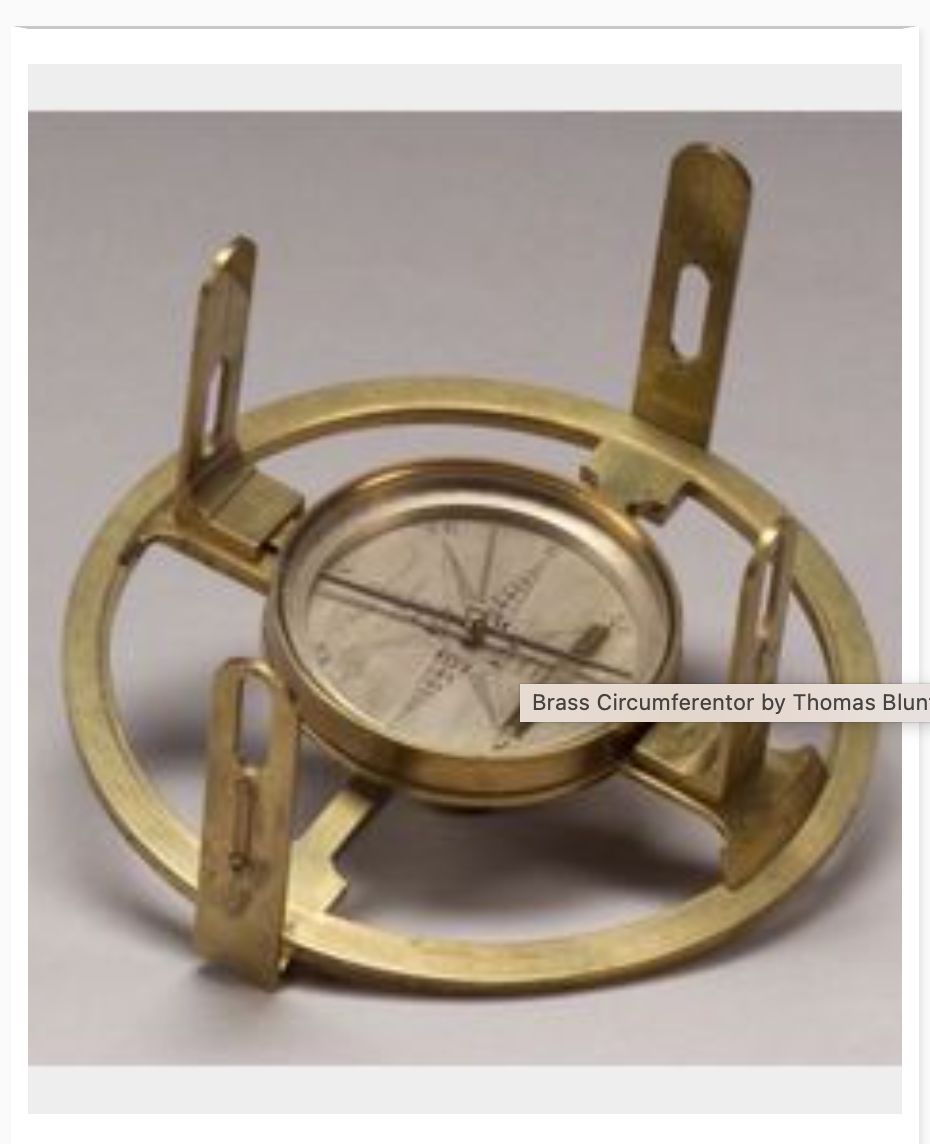
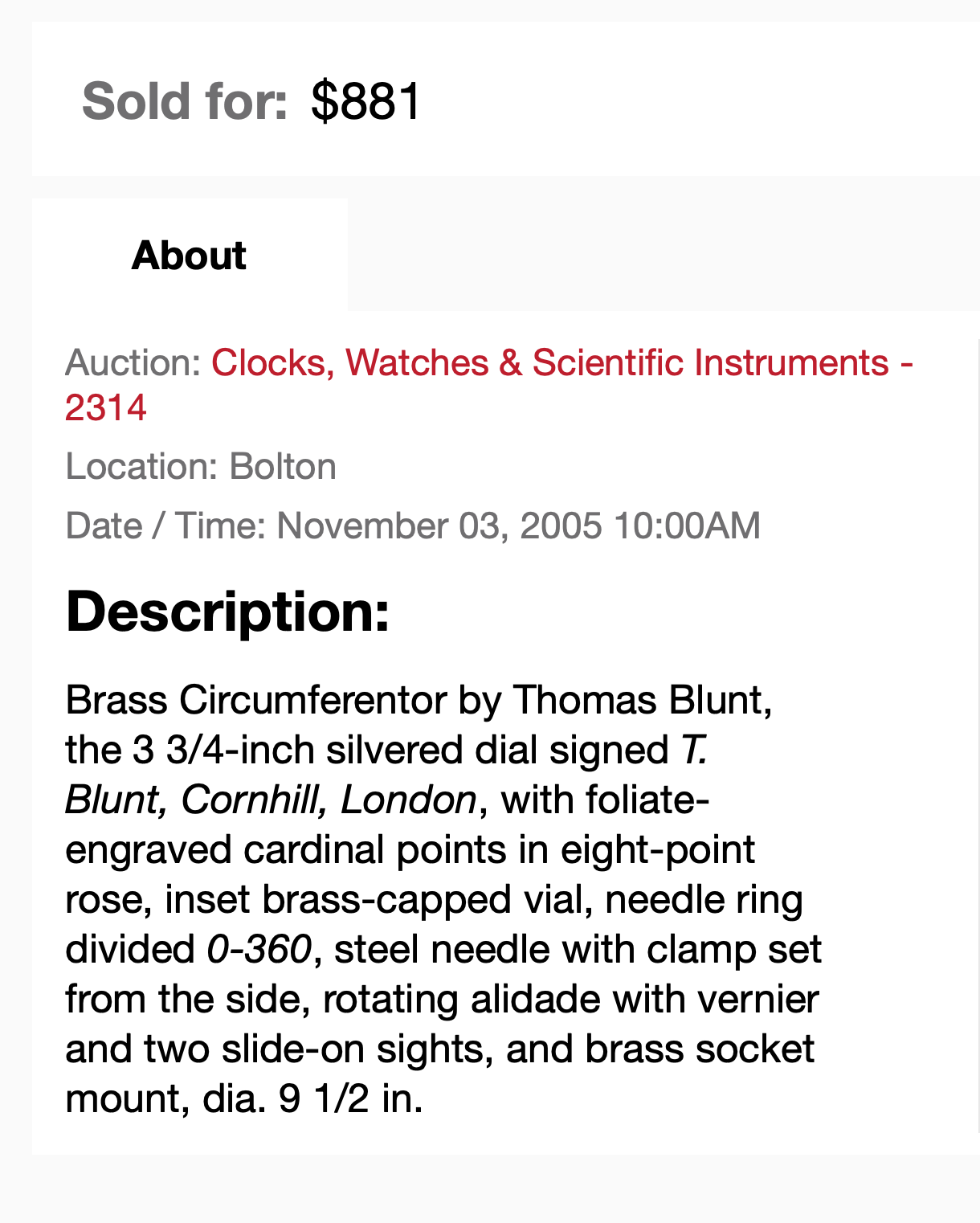
2007 Auction
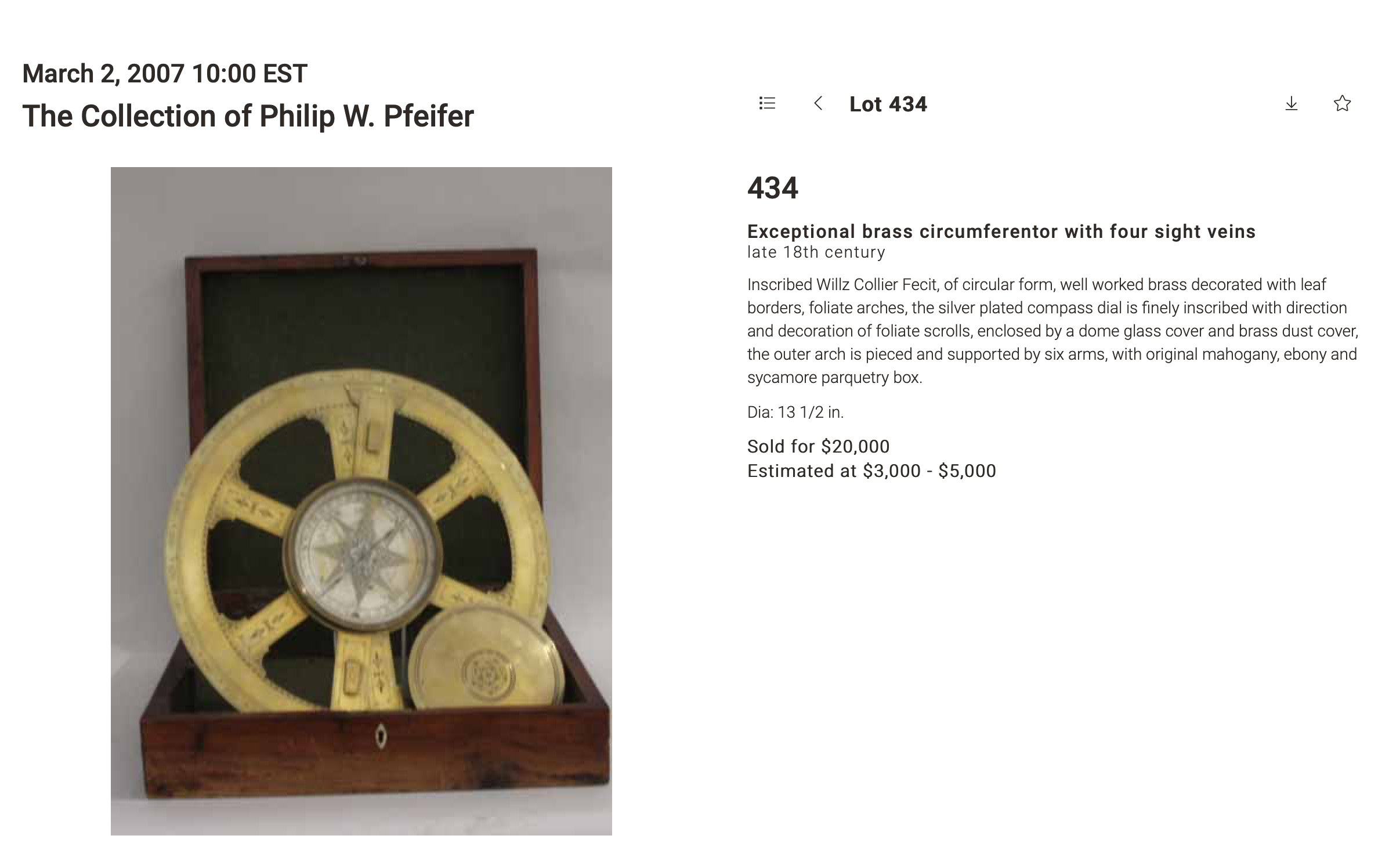
2009 Auction

2021 Auction

2022 Auction
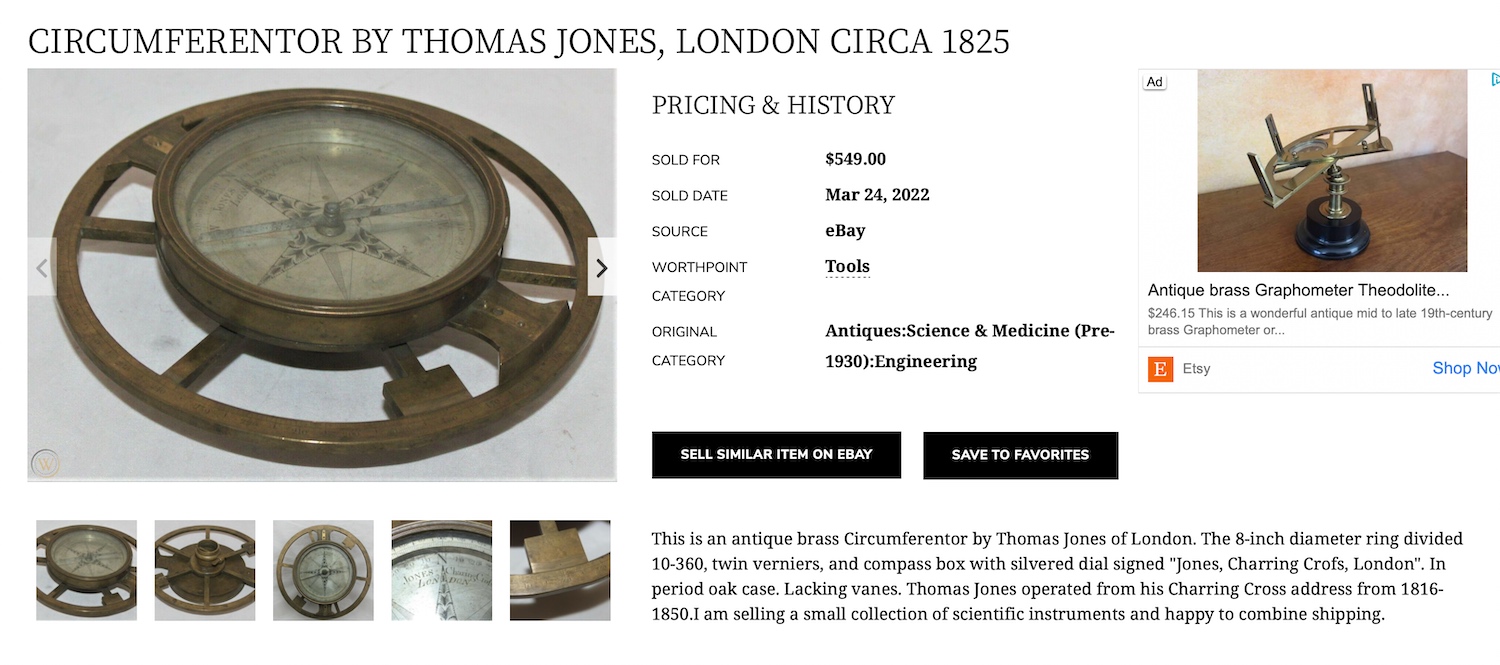
2022 Tesseract Ad
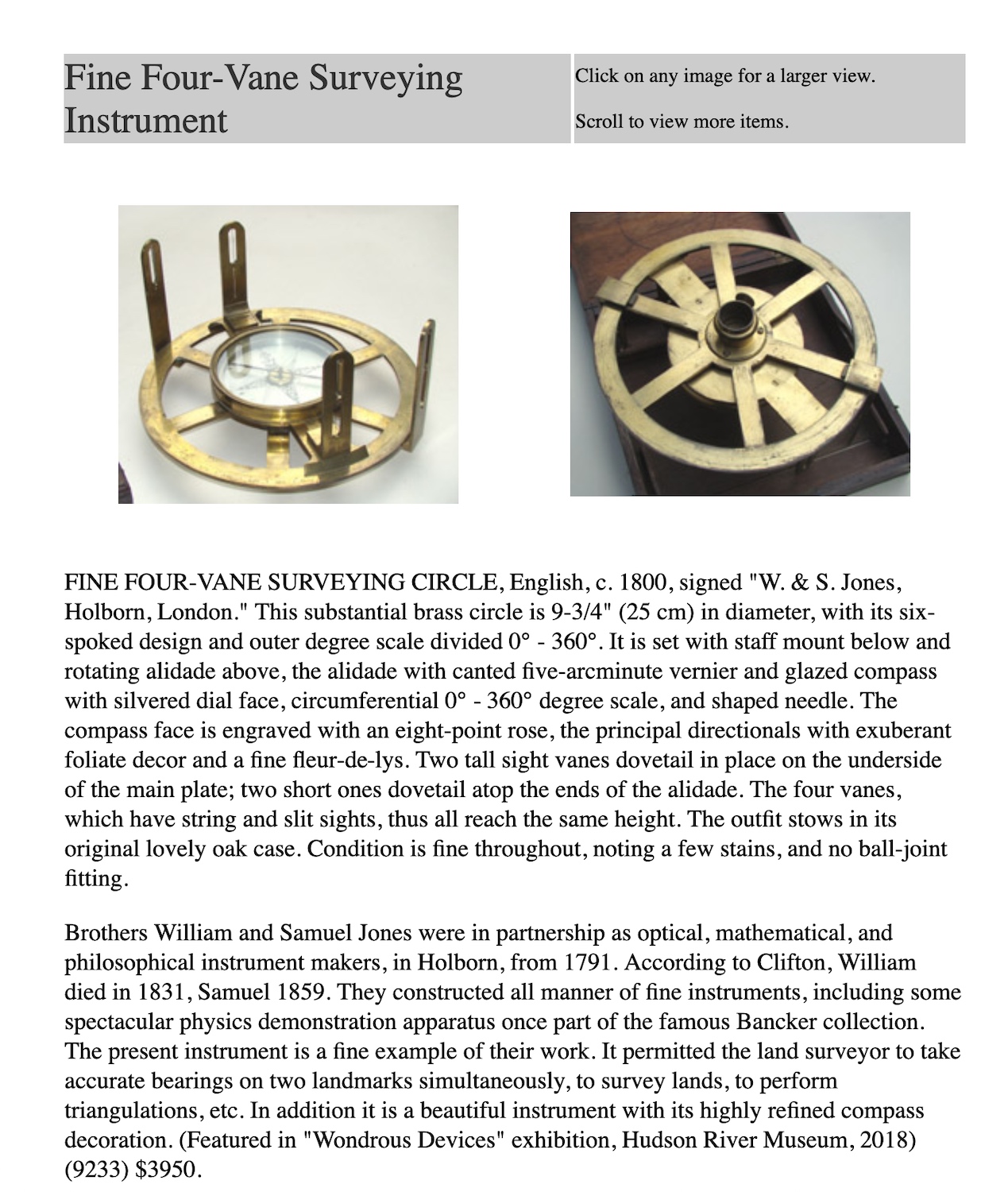
Final Thoughts on Collecting Simple Theodolites
I suspect Simple Theodolites were fairly prevalent in early America, and for that reason I believe collectors should consider adding a Simple Theodolite to their collections.
If you want to see some amazing Theodolites, go to the UK Science Museum Group and search for Theodolites, or Click Here.
© 2020 Russ Uzes/Contact Me
